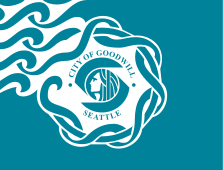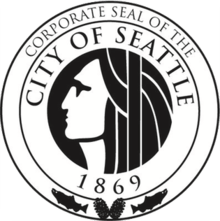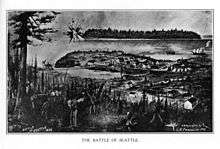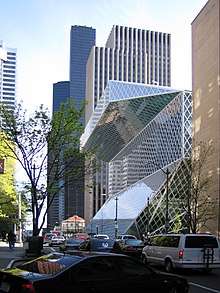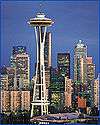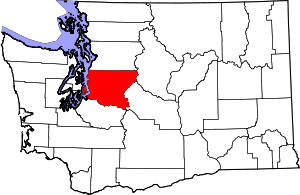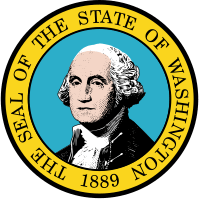Seattle
Seattle (/siˈætəl/ (![]()
Seattle, Washington | |
|---|---|
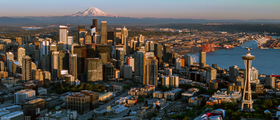 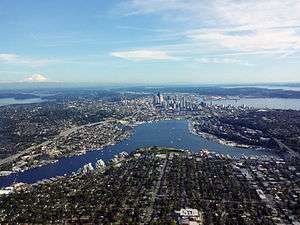 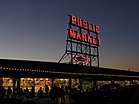 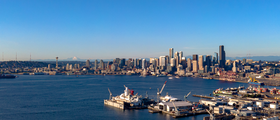 From top: aerial view of downtown and beyond, Lake Union, Pike Place Market, and the downtown skyline from West Seattle | |
| Nickname(s): The Emerald City, Jet City, Rain City | |
| Motto(s): The City of Flowers, The City of Goodwill | |
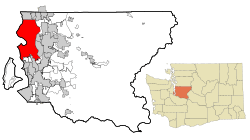 Location within King County | |
 Seattle Location within the State of Washington  Seattle Location within the United States 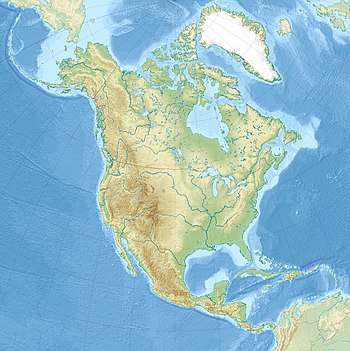 Seattle Location within North America | |
| Coordinates: 47°36′35″N 122°19′59″W | |
| Country | United States |
| State | Washington |
| County | King |
| Founded | 1851 |
| Incorporated | December 2, 1869 |
| Named for | Chief Si'ahl |
| Government | |
| • Type | Mayor–council |
| • Body | Seattle City Council |
| • Mayor | Jenny Durkan (D) |
| • Deputy mayors | Michael Fong and Shefali Ranganathan |
| Area | |
| • City | 142.07 sq mi (367.97 km2) |
| • Land | 83.99 sq mi (217.54 km2) |
| • Water | 58.08 sq mi (150.43 km2) |
| • Metro | 8,186 sq mi (21,202 km2) |
| Elevation | 175 ft (53 m) |
| Highest elevation | 520 ft (158 m) |
| Lowest elevation | 0 ft (0 m) |
| Population | |
| • City | 608,660 |
| • Estimate (2019)[3] | 753,675 |
| • Rank | US: 18th |
| • Density | 8,973.18/sq mi (3,464.55/km2) |
| • Urban | 3,059,393 (US: 14th) |
| • Metro | 3,979,845 (US: 15th) |
| • CSA | 4,903,675 (US: 14th) |
| Demonym(s) | Seattleite[4] or Seattlite[5] |
| Time zone | UTC−8 (PST) |
| • Summer (DST) | UTC−7 (PDT) |
| ZIP Codes | |
| Area code | 206 |
| FIPS code | 53-63000 |
| GNIS feature ID | 1512650[8] |
| Website | Seattle.gov |
Seattle is situated on an isthmus between Puget Sound (an inlet of the Pacific Ocean) and Lake Washington. It is the northernmost large city in the United States, located about 100 miles (160 km) south of the Canadian border. A major gateway for trade with Asia, Seattle is the fourth-largest port in North America in terms of container handling as of 2015.[13]
The Seattle area was inhabited by Native Americans for at least 4,000 years before the first permanent European settlers.[14] Arthur A. Denny and his group of travelers, subsequently known as the Denny Party, arrived from Illinois via Portland, Oregon, on the schooner Exact at Alki Point on November 13, 1851.[15] The settlement was moved to the eastern shore of Elliott Bay and named "Seattle" in 1852, in honor of Chief Si'ahl of the local Duwamish and Suquamish tribes. Today, Seattle has high populations of Native, Scandinavian, Asian American and African American people, as well as a thriving LGBT community that ranks sixth in the United States by population.[16]
Logging was Seattle's first major industry, but by the late 19th century, the city had become a commercial and shipbuilding center as a gateway to Alaska during the Klondike Gold Rush. Growth after World War II was partially due to the local Boeing company, which established Seattle as a center for aircraft manufacturing. The Seattle area developed into a technology center from the 1980s onwards with companies like Microsoft becoming established in the region; Microsoft founder Bill Gates is a Seattleite by birth. Internet retailer Amazon was founded in Seattle in 1994, and major airline Alaska Airlines is based in SeaTac, Washington, serving Seattle's international airport, Seattle–Tacoma International Airport. The stream of new software, biotechnology, and Internet companies led to an economic revival, which increased the city's population by almost 50,000 between 1990 and 2000. Owing largely to its rapidly increasing population in the 21st century, Seattle and the state of Washington have some of the highest minimum wages in the country, at $15 per hour for smaller businesses and $16 for the city's largest employers.[17]
Seattle has a noteworthy musical history. From 1918 to 1951, nearly two dozen jazz nightclubs existed along Jackson Street, from the current Chinatown/International District to the Central District. The jazz scene nurtured the early careers of Ray Charles, Quincy Jones, Ernestine Anderson, and others. Seattle is also the birthplace of rock musician Jimi Hendrix, as well as the origin of the bands Nirvana, Pearl Jam, Soundgarden, Alice in Chains, Foo Fighters and the alternative rock movement grunge.[18]
History
Founding
Archaeological excavations suggest that Native Americans have inhabited the Seattle area for at least 4,000 years.[14] By the time the first European settlers arrived, the people (subsequently called the Duwamish tribe) occupied at least seventeen villages in the areas around Elliott Bay.[19][20][21]
The first European to visit the Seattle area was George Vancouver, in May 1792 during his 1791–95 expedition for the British Navy to chart the Pacific Northwest.[22] In 1851, a large party led by Luther Collins made a location on land at the mouth of the Duwamish River; they formally claimed it on September 14, 1851.[23] Thirteen days later, members of the Collins Party on the way to their claim passed three scouts of the Denny Party.[24] Members of the Denny Party claimed land on Alki Point on September 28, 1851.[25] The rest of the Denny Party set sail from Portland, Oregon, and landed on Alki point during a rainstorm on November 13, 1851.[25]
Duwamps
After a difficult winter, most of the Denny Party relocated across Elliott Bay and claimed land a second time at the site of present-day Pioneer Square,[25] naming this new settlement Duwamps.
Charles Terry and John Low remained at the original landing location, reestablished their old land claim and called it "New York", but renamed "New York Alki" in April 1853, from a Chinook word meaning, roughly, "by and by" or "someday".[26][27]
For the next few years, New York Alki and Duwamps competed for dominance, but in time Alki was abandoned and its residents moved across the bay to join the rest of the settlers.[28]
David Swinson "Doc" Maynard, one of the founders of Duwamps, was the primary advocate to name the settlement Seattle after Chief Si'ahl (Lushootseed: siʔaɫ, anglicized as "Seattle") of the Duwamish and Suquamish tribes.[29][30][31] A modern transliteration of the original Coast Salish settlements around Elliott Bay is rendered in Lushootseed as dᶻidᶻəlal̓ič.[32]
Incorporations
The name "Seattle" appears on official Washington Territory papers dated May 23, 1853, when the first plats for the village were filed. In 1855, nominal land settlements were established. On January 14, 1865, the Legislature of Territorial Washington incorporated the Town of Seattle with a board of trustees managing the city. The Town of Seattle was disincorporated on January 18, 1867, and remained a mere precinct of King County until late 1869, when a new petition was filed and the city was re-incorporated December 2, 1869, with a mayor–council government.[25][33] The corporate seal of the City of Seattle carries the date "1869" and a likeness of Chief Si'ahl in left profile.[34]
Timber town
.jpeg)
Seattle has a history of boom-and-bust cycles, like many other cities near areas of extensive natural and mineral resources. Seattle has risen several times economically, then gone into precipitous decline, but it has typically used those periods to rebuild solid infrastructure.[35]
The first such boom, covering the early years of the city, rode on the lumber industry. During this period the road now known as Yesler Way won the nickname "Skid Road," supposedly after the timber skidding down the hill to Henry Yesler's sawmill. The later dereliction of the area may be a possible origin for the term which later entered the wider American lexicon as Skid Row.[36] Like much of the American West, Seattle saw numerous conflicts between labor and management, as well as ethnic tensions that culminated in the anti-Chinese riots of 1885–1886.[37] This violence originated with unemployed whites who were determined to drive the Chinese from Seattle (anti-Chinese riots also occurred in Tacoma). In 1900, Asians were 4.2% of the population.[38] Authorities declared martial law and federal troops arrived to put down the disorder.
Seattle had achieved sufficient economic success that when the Great Seattle Fire of 1889 destroyed the central business district, a far grander city-center rapidly emerged in its place.[39] Finance company Washington Mutual, for example, was founded in the immediate wake of the fire.[40] However, the Panic of 1893 hit Seattle hard.[41]
Gold Rush, World War I, and the Great Depression
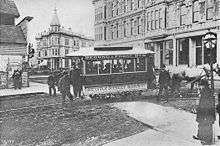
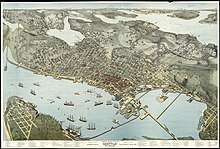
The second and most dramatic boom resulted from the Klondike Gold Rush, which ended the depression that had begun with the Panic of 1893. In a short time, Seattle became a major transportation center. On July 14, 1897, the S.S. Portland docked with its famed "ton of gold," and Seattle became the main transport and supply point for the miners in Alaska and the Yukon. Few of those working men found lasting wealth. However, it was Seattle's business of clothing the miners and feeding them salmon that panned out in the long run. Along with Seattle, other cities like Everett, Tacoma, Port Townsend, Bremerton, and Olympia, all in the Puget Sound region, became competitors for exchange, rather than mother lodes for extraction, of precious metals.[43] The boom lasted well into the early part of the 20th century, and funded many new Seattle companies and products. In 1907, 19-year-old James E. Casey borrowed $100 from a friend and founded the American Messenger Company (later UPS). Other Seattle companies founded during this period include Nordstrom and Eddie Bauer.[40] Seattle brought in the Olmsted Brothers landscape architecture firm to design a system of parks and boulevards.[44]
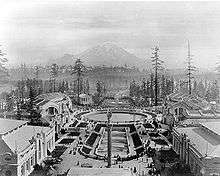
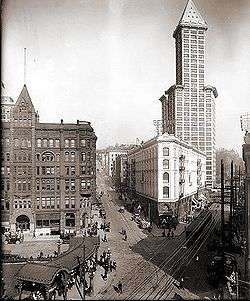
The Gold Rush era culminated in the Alaska-Yukon-Pacific Exposition of 1909, which is largely responsible for the layout of today's University of Washington campus.[46]
A shipbuilding boom in the early part of the 20th century became massive during World War I, making Seattle somewhat of a company town. The subsequent retrenchment led to the Seattle General Strike of 1919, the first general strike in the country.[47] A 1912 city development plan by Virgil Bogue went largely unused. Seattle was mildly prosperous in the 1920s but was particularly hard hit in the Great Depression, experiencing some of the country's harshest labor strife in that era. Violence during the Maritime Strike of 1934 cost Seattle much of its maritime traffic, which was rerouted to the Port of Los Angeles.[48]
The Great Depression in Seattle affected many minority groups, one being the Asian Pacific Americans; they were subject to racism, loss of property, and failed claims of unemployment due to citizenship status.[49]
Seattle was one of the major cities that benefited from programs such as the WPA, CCC, UCL, and PWA.[50][51] The workers, mostly men, built roads, parks, dams, schools, railroads, bridges, docks, and even historical and archival record sites and buildings. However, Seattle faced massive unemployment, loss of lumber and construction industries as Los Angeles prevailed as the bigger West Coast city. Seattle had building contracts that rivaled New York City and Chicago, but lost to LA as well. Seattle's eastern farm land faded due to Oregon's and the Midwest's, forcing people into town.[52][53]
The famous Hooverville arose during the Depression, leading to Seattle's growing homeless population. Stationed outside Seattle, the Hooverville housed thousands of men but very very few children and no women. With work projects close to the city, Hooverville grew and the WPA settled into the city.[54]
A movement by women arose from Seattle during the Depression. Fueled by Eleanor Roosevelt's book It's Up to the Women, women pushed for recognition, not just as housewives, but as the backbone to family. Using newspapers and journals Working Woman and The Woman Today, women pushed to be seen as equal and receive some recognition.[55]
Seattle's University of Washington was greatly affected during the Depression era. As schools across Washington lost funding and attendance, the UW actually prospered during the time period. While Seattle public schools were influenced by Washington's superintendent Worth McClure,[56] they still struggled to pay teachers and maintain attendance. The UW, despite academic challenges that plagued the college due to differing views on teaching and learning, focused on growth in student enrollment rather than improving the existing school.[57]
Seattle was also the home base of impresario Alexander Pantages who, starting in 1902, opened a number of theaters in the city exhibiting vaudeville acts and silent movies. His activities soon expanded, and the thrifty Greek went on and became one of America's greatest theater and movie tycoons. Between Pantages and his rival John Considine, Seattle was for a while the western United States' vaudeville mecca. B. Marcus Priteca, the Scottish-born and Seattle-based architect, built several theaters for Pantages, including some in Seattle. The theaters he built for Pantages in Seattle have been either demolished or converted to other uses, but many other theaters survive in other cities of the U.S., often retaining the Pantages name. Seattle's surviving Paramount Theatre, on which he collaborated, was not a Pantages theater.
Post-war years: aircraft and software
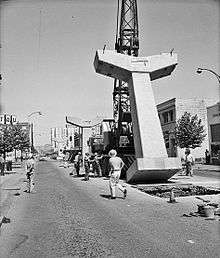
War work again brought local prosperity during World War II, this time centered on Boeing aircraft. The war dispersed the city's numerous Japanese-American businessmen due to the Japanese American internment. After the war, the local economy dipped. It rose again with Boeing's growing dominance in the commercial airliner market.[58] Seattle celebrated its restored prosperity and made a bid for world recognition with the Century 21 Exposition, the 1962 World's Fair, for which the iconic Space Needle was built.[59] Another major local economic downturn was in the late 1960s and early 1970s, at a time when Boeing was heavily affected by the oil crises, loss of government contracts, and costs and delays associated with the Boeing 747. Many people left the area to look for work elsewhere, and two local real estate agents put up a billboard reading "Will the last person leaving Seattle – Turn out the lights."[60]
Seattle remained the corporate headquarters of Boeing until 2001, when the company separated its headquarters from its major production facilities; the headquarters were moved to Chicago.[61] The Seattle area is still home to Boeing's Renton narrow-body plant (where the 707, 720, 727, and 757 were assembled, and the 737 is assembled today) and Everett wide-body plant (assembly plant for the 747, 767, 777, and 787). The company's credit union for employees, BECU, remains based in the Seattle area, though it is now open to all residents of Washington.
As prosperity began to return in the 1980s, the city was stunned by the Wah Mee massacre in 1983, when 13 people were killed in an illegal gambling club in the Seattle Chinatown-International District.[62] Beginning with Microsoft's 1979 move from Albuquerque, New Mexico, to nearby Bellevue, Washington,[63] Seattle and its suburbs became home to a number of technology companies including Amazon.com, F5 Networks, RealNetworks, Nintendo of America, McCaw Cellular (now part of AT&T Mobility), VoiceStream (now T-Mobile), and biomedical corporations such as HeartStream (later purchased by Philips), Heart Technologies (later purchased by Boston Scientific), Physio-Control (later purchased by Medtronic), ZymoGenetics, ICOS (later purchased by Eli Lilly and Company) and Immunex (later purchased by Amgen). This success brought an influx of new residents with a population increase within city limits of almost 50,000 between 1990 and 2000,[64] and saw Seattle's real estate become some of the most expensive in the country.[65] In 1993, the movie Sleepless in Seattle brought the city further national attention,[66] as did the television sitcom Frasier. The dot-com boom caused a great frenzy among the technology companies in Seattle but the bubble ended in early 2001.[67][68]
Seattle in this period attracted widespread attention as home to these many companies, but also by hosting the 1990 Goodwill Games[69] and the APEC leaders conference in 1993, as well as through the worldwide popularity of grunge, a sound that had developed in Seattle's independent music scene.[70] Another bid for worldwide attention—hosting the World Trade Organization Ministerial Conference of 1999—garnered visibility, but not in the way its sponsors desired, as related protest activity and police reactions to those protests overshadowed the conference itself.[71] The city was further shaken by the Mardi Gras Riots in 2001, and then literally shaken the following day by the Nisqually earthquake.[72]
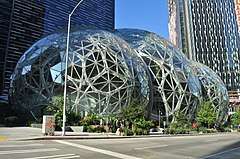
Another boom began as the city emerged from the Great Recession which commenced when Amazon.com moved its headquarters from North Beacon Hill to South Lake Union. This initiated a historic construction boom which resulted in the completion of almost 10,000 apartments in Seattle in 2017, which is more than any previous year and nearly twice as many as were built in 2016.[73][74] Beginning in 2010, and for the next five years, Seattle gained an average of 14,511 residents per year, with the growth strongly skewed toward the center of the city,[75] as unemployment dropped from roughly 9 percent to 3.6 percent.[76] The city has found itself "bursting at the seams", with over 45,000 households spending more than half their income on housing and at least 2,800 people homeless, and with the country's sixth-worst rush hour traffic.[76]
Geography
Situated at latitude 47°36'35"N, Seattle is the northernmost U.S. city with at least 500,000 people, farther north than Canadian cities such as Toronto, Ottawa, and Montreal, and at about the same latitude as Salzburg, Austria. It has a land area of 83.9 square miles (217.3 km2).
The topography of Seattle is hilly. The city lies on several hills, including Capitol Hill, First Hill, West Seattle, Beacon Hill, Magnolia, Denny Hill, and Queen Anne. The Kitsap and the Olympic peninsulas along with the Olympic mountains lie to the west of Puget Sound, while the Cascade Range and Lake Sammamish lie to the east of Lake Washington. The city has over 5,540 acres (2,242 ha) of parkland.
Cityscape
Topography
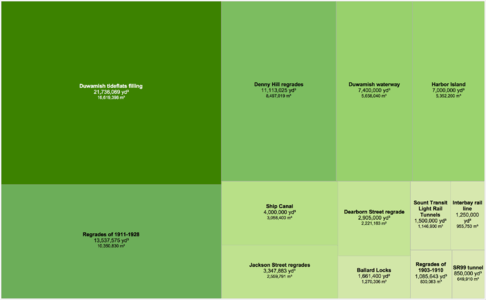
Seattle is located between the saltwater Puget Sound (an arm of the Pacific Ocean) to the west and Lake Washington to the east. The city's chief harbor, Elliott Bay, is part of Puget Sound, which makes the city an oceanic port. To the west, beyond Puget Sound, are the Kitsap Peninsula and Olympic Mountains on the Olympic Peninsula; to the east, beyond Lake Washington and the Eastside suburbs, are Lake Sammamish and the Cascade Range. Lake Washington's waters flow to Puget Sound through the Lake Washington Ship Canal (consisting of two man-made canals, Lake Union, and the Hiram M. Chittenden Locks at Salmon Bay, ending in Shilshole Bay on Puget Sound).
The sea, rivers, forests, lakes, and fields surrounding Seattle were once rich enough to support one of the world's few sedentary hunter-gatherer societies. The surrounding area lends itself well to sailing, skiing, bicycling, camping, and hiking year-round.[78][79]
The city itself is hilly, though not uniformly so.[80] Like Rome, the city is said to lie on seven hills;[81] the lists vary but typically include Capitol Hill, First Hill, West Seattle, Beacon Hill, Queen Anne, Magnolia, and the former Denny Hill. The Wallingford, Delridge, Mount Baker, Seward Park, Washington Park, Broadmoor, Madrona, Phinney Ridge, Sunset Hill, Blue Ridge, Broadview, Laurelhurst, Hawthorne Hills, Maple Leaf, and Crown Hill neighborhoods are all located on hills as well. Many of the hilliest areas are near the city center, with Capitol Hill, First Hill, and Beacon Hill collectively constituting something of a ridge along an isthmus between Elliott Bay and Lake Washington.[82] The break in the ridge between First Hill and Beacon Hill is man-made, the result of two of the many regrading projects that reshaped the topography of the city center.[83] The topography of the city center was also changed by the construction of a seawall and the artificial Harbor Island (completed 1909) at the mouth of the city's industrial Duwamish Waterway, the terminus of the Green River. The highest point within city limits is at High Point in West Seattle, which is roughly located near 35th Ave SW and SW Myrtle St. Other notable hills include Crown Hill, View Ridge/Wedgwood/Bryant, Maple Leaf, Phinney Ridge, Mt. Baker Ridge, and Highlands/Carkeek/Bitterlake.
North of the city center, Lake Washington Ship Canal connects Puget Sound to Lake Washington. It incorporates four natural bodies of water: Lake Union, Salmon Bay, Portage Bay, and Union Bay.
Due to its location in the Pacific Ring of Fire, Seattle is in a major earthquake zone. On February 28, 2001, the magnitude 6.8 Nisqually earthquake did significant architectural damage, especially in the Pioneer Square area (built on reclaimed land, as are the Industrial District and part of the city center), but caused only one fatality.[84] Other strong quakes occurred on January 26, 1700 (estimated at 9 magnitude), December 14, 1872 (7.3 or 7.4),[85] April 13, 1949 (7.1),[86] and April 29, 1965 (6.5).[87] The 1965 quake caused three deaths in Seattle directly and one more by heart failure.[87] Although the Seattle Fault passes just south of the city center, neither it[88] nor the Cascadia subduction zone has caused an earthquake since the city's founding. The Cascadia subduction zone poses the threat of an earthquake of magnitude 9.0 or greater, capable of seriously damaging the city and collapsing many buildings, especially in zones built on fill.[89]
According to the United States Census Bureau, the city has a total area of 142.5 square miles (369 km2),[90] 83.9 square miles (217 km2) of which is land and 58.7 square miles (152 km2), water (41.16% of the total area).
Climate
| Seattle | ||||||||||||||||||||||||||||||||||||||||||||||||||||||||||||
|---|---|---|---|---|---|---|---|---|---|---|---|---|---|---|---|---|---|---|---|---|---|---|---|---|---|---|---|---|---|---|---|---|---|---|---|---|---|---|---|---|---|---|---|---|---|---|---|---|---|---|---|---|---|---|---|---|---|---|---|---|
| Climate chart (explanation) | ||||||||||||||||||||||||||||||||||||||||||||||||||||||||||||
| ||||||||||||||||||||||||||||||||||||||||||||||||||||||||||||
| ||||||||||||||||||||||||||||||||||||||||||||||||||||||||||||
Seattle has a temperate climate, classified in the Mediterranean zone by the main climatic classification (Köppen: Csb)[92][93][94] but some sources put the city in the oceanic zone (Cfb).[95][96] It has cool, wet winters and mild, relatively dry summers, covering characteristics of both.[97][98] The climate is sometimes characterized as a "modified Mediterranean" climate because it is cooler and wetter than a "true" Mediterranean climate, but shares the characteristic dry summer (which has a strong influence on the region's vegetation).[99] The city and environs are part of USDA hardiness zone 8b, with isolated coastal pockets falling under 9a.[100]
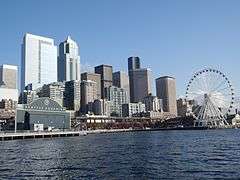
Temperature extremes are moderated by the adjacent Puget Sound, greater Pacific Ocean, and Lake Washington. Thus extreme heat waves are rare in the Seattle area, as are very cold temperatures (below about 15 °F (−9 °C)). The Seattle area is the cloudiest region of the United States, due in part to frequent storms and lows moving in from the adjacent Pacific Ocean. With many more "rain days" than other major American cities, Seattle has a well-earned reputation for frequent rain.[101] In an average year, at least 0.01 inches (0.25 mm) of precipitation falls on 150 days, more than nearly all U.S. cities east of the Rocky Mountains.[102] However, due to the fact that Seattle often has merely a light drizzle falling from the sky for many days, Seattle actually receives significantly less rainfall (or other precipitation) overall than many other U.S. cities like New York City, Miami, or Houston. Seattle is cloudy 201 days out of the year and partly cloudy 93 days.[77] (Official weather and climatic data is collected at Seattle–Tacoma International Airport, located about 19 km (12 mi) south of downtown in the city of SeaTac, which is at a higher elevation, and records more cloudy days and fewer partly cloudy days per year.[77])
Hot temperature extremes are enhanced by dry, compressed wind from the west slopes of the Cascades,[103] while cold temperatures are generated mainly from the Fraser Valley in British Columbia.[104]
From 1981 to 2010, the average annual precipitation measured at Seattle–Tacoma International Airport was 37.49 inches (952 mm). Annual precipitation has ranged from 23.78 in (604 mm) in 1952 to 55.14 in (1,401 mm) in 1950; for water year (October 1 – September 30) precipitation, the range is 23.16 in (588 mm) in 1976–77 to 51.82 in (1,316 mm) in 1996–97.[105] Due to local variations in microclimate, Seattle also receives significantly lower precipitation than some other locations west of the Cascades. Around 80 mi (129 km) to the west, the Hoh Rain Forest in Olympic National Park on the western flank of the Olympic Mountains receives an annual average precipitation of 142 in (3.61 m). Sixty miles (95 km) to the south of Seattle, the state capital Olympia, which is out of the Olympic Mountains' rain shadow, receives an annual average precipitation of 50 in (1,270 mm).[105] The city of Bremerton, about 15 mi (24 km) west of downtown Seattle on the other side of the Puget Sound, receives 56.4 in (1,430 mm) of precipitation annually.[105]
Conversely, the northeastern portion of the Olympic Peninsula, which lies east of the Olympic Mountains is located within the Olympic rain shadow and receives significantly less precipitation than its surrounding areas. Prevailing airflow from the west expands and cools as it goes over the mountain range, resulting in high levels of precipitation within the mountains and its western slopes. Once the airflow reaches the leeward side of the mountains, it then compresses and warms, and is significantly dryer. Sequim, Washington, nicknamed "Sunny Sequim," is located approximately 40 mi (64 km) northwest of downtown Seattle and receives just 16.51 inches (419 mm) of annual precipitation, more comparable to that of Los Angeles. Often an area devoid of cloud cover can be seen extending out over the Puget Sound to the north and east of Sequim. On average Sequim observes 127 sunny days per year in addition to 127 days with partial cloud cover. Other areas influenced by the Olympic rain shadow include Port Angeles, Port Townsend, extending as far north as Victoria, British Columbia.[106]
In November, Seattle averages more rainfall than any other U.S. city of more than 250,000 people; it also ranks highly in winter precipitation. Conversely, the city receives some of the lowest precipitation amounts of any large city from June to September. Seattle is one of the five rainiest major U.S. cities as measured by the number of days with precipitation, and it receives some of the lowest amounts of annual sunshine among major cities in the lower 48 states, along with some cities in the Northeast, Ohio, and Michigan. Thunderstorms are rare,[107] as the city reports thunder on just seven days per year.[108] By comparison, Fort Myers, Florida, reports thunder on 93 days per year, Kansas City on 52, and New York City on 25.
Seattle experiences its heaviest rainfall during November, December, and January, receiving roughly half of its annual rainfall (by volume) during this period. In late fall and early winter, atmospheric rivers (also known as "Pineapple Express" systems), strong frontal systems, and Pacific low-pressure systems are common. Light rain and drizzle are the predominant forms of precipitation during the remainder of the year. For instance, on average, less than 1.6 in (41 mm) of rain falls in July and August combined when rain is less common. On occasion, Seattle experiences somewhat more significant weather events. One such event occurred on December 2–4, 2007, when sustained hurricane-force winds and widespread heavy rainfall associated with a strong Pineapple Express event occurred in the greater Puget Sound area and the western parts of Washington and Oregon. Precipitation totals exceeded 13.8 in (350 mm) in some areas with winds topping out at 209 km/h (130 mph) along coastal Oregon.[109] It became the second wettest event in Seattle history when a little over 130 mm (5.1 in) of rain fell on Seattle in a 24-hour period. Lack of adaptation to the heavy rain contributed to five deaths, widespread flooding and damage.[110]
Autumn, winter, and early spring are frequently characterized by rain. Winters are cool and wet with December, the coolest month, averaging 40.6 °F (4.8 °C), with 28 annual days with lows that reach the freezing mark, and 2.0 days where the temperature stays at or below freezing all day;[105] the temperature rarely lowers to 20 °F (−7 °C).[105] Summers are sunny, dry and warm, with August, the warmest month, with high temperatures averaging 76.1 °F (24.5 °C), and reaching 90 °F (32 °C) on 3.1 days per year. In 2015 the city recorded 13 days over 90 °F.[105] The hottest officially recorded temperature was 103 °F (39 °C) on July 29, 2009;[111] the coldest recorded temperature was 0 °F (−18 °C) on January 31, 1950;[112] the record cold daily maximum is 16 °F (−9 °C) on January 14, 1950, while, conversely, the record warm daily minimum is 71 °F (22 °C) the day the official record high was set.[105] The average window for freezing temperatures is November 16 through March 10, allowing a growing season of 250 days.[105]
.jpeg)
Seattle typically receives some snowfall on an annual basis but heavy snow is rare. Average annual snowfall, as measured at Sea-Tac Airport, is 6.8 inches (17.3 cm). From winter season to winter season, amounts can be extremely variable. A single calendar-day snowfall of six inches (15 cm) or greater has occurred on only 17 days since 1948, and only three times since February 17, 1990; 6.8 in (17.3 cm) of snow officially fell at Sea-Tac airport on January 18, 2012. This 2012 moderate snow event was officially the 12th snowiest calendar day at the airport since 1948 and snowiest since November 1985.[105] Locations to the south of Seattle received more, with Olympia and Chehalis receiving 14 to 18 in (36 to 46 cm).[113] Much of the city of Seattle proper received somewhat lesser snowfall accumulations. Another moderate snow event occurred from December 12–25, 2008, when over one foot (30 cm) of snow fell and stuck on much of the roads over those two weeks, when temperatures remained below 32 °F (0 °C), causing widespread difficulties in a city not equipped for clearing snow. In February 2019, Seattle experienced its snowiest month in 50 years (since January 1969), with 20.2 inches of snow, all from February 3–11, with 6.4 inches on Feb. 8 and 6.1 more inches on Feb. 11.[114] The largest documented snowstorm occurred from January 5–9, 1880, with snow drifting to 6 feet (1.8 m) in places at the end of the snow event. From January 31 to February 2, 1916, another heavy snow event occurred with 29 in (74 cm) of snow on the ground by the time the event was over.[115] With official records dating to 1948, the largest single-day snowfall is 20.0 in (51 cm) on January 13, 1950.[116] Seasonal snowfall has ranged from zero in 1991–92 to 67.5 in (171 cm) in 1968–69, with trace amounts having occurred as recently as 2009–10.[105] The month of January 1950 was particularly severe, bringing 57.2 in (145 cm) of snow, the most of any month along with the aforementioned record cold.[105]
The Puget Sound Convergence Zone is an important feature of Seattle's weather. In the convergence zone, air arriving from the north meets air flowing in from the south. Both streams of air originate over the Pacific Ocean; airflow is split by the Olympic Mountains to Seattle's west, then reunited to the east. When the air currents meet, they are forced upward, resulting in convection.[117] Thunderstorms caused by this activity are usually weak and can occur north and south of town, but Seattle itself rarely receives more than occasional thunder and small hail showers. The Hanukkah Eve Wind Storm in December 2006 is an exception that brought heavy rain and winds gusting up to 69 mph (111 km/h), an event that was not caused by the Puget Sound Convergence Zone and was widespread across the Pacific Northwest.
One of many exceptions to Seattle's reputation as a damp location occurs in El Niño years, when marine weather systems track as far south as California and less than the usual precipitation falls in the Puget Sound area.[118] Since the region's water comes from mountain snow packs during the dry summer months, El Niño winters can not only produce substandard skiing but can result in water rationing and a shortage of hydroelectric power the following summer.[119]
| Climate data for Seattle (SeaTac Airport), 1981–2010 normals,[lower-alpha 1] extremes 1894–present[lower-alpha 2] | |||||||||||||
|---|---|---|---|---|---|---|---|---|---|---|---|---|---|
| Month | Jan | Feb | Mar | Apr | May | Jun | Jul | Aug | Sep | Oct | Nov | Dec | Year |
| Record high °F (°C) | 67 (19) |
70 (21) |
79 (26) |
89 (32) |
93 (34) |
98 (37) |
103 (39) |
99 (37) |
98 (37) |
89 (32) |
74 (23) |
66 (19) |
103 (39) |
| Mean maximum °F (°C) | 56.4 (13.6) |
60.3 (15.7) |
66.0 (18.9) |
74.7 (23.7) |
81.5 (27.5) |
85.5 (29.7) |
90.6 (32.6) |
88.8 (31.6) |
84.6 (29.2) |
72.2 (22.3) |
60.7 (15.9) |
55.9 (13.3) |
93.8 (34.3) |
| Average high °F (°C) | 47.2 (8.4) |
49.9 (9.9) |
53.7 (12.1) |
58.5 (14.7) |
64.7 (18.2) |
69.9 (21.1) |
75.8 (24.3) |
76.3 (24.6) |
70.5 (21.4) |
59.7 (15.4) |
50.9 (10.5) |
45.7 (7.6) |
60.3 (15.7) |
| Daily mean °F (°C) | 42.0 (5.6) |
43.4 (6.3) |
46.5 (8.1) |
50.3 (10.2) |
56.0 (13.3) |
60.9 (16.1) |
65.7 (18.7) |
66.1 (18.9) |
61.3 (16.3) |
52.8 (11.6) |
45.4 (7.4) |
40.6 (4.8) |
52.6 (11.4) |
| Average low °F (°C) | 36.9 (2.7) |
36.9 (2.7) |
39.3 (4.1) |
42.2 (5.7) |
47.3 (8.5) |
51.9 (11.1) |
55.6 (13.1) |
55.9 (13.3) |
52.1 (11.2) |
45.8 (7.7) |
40.0 (4.4) |
35.6 (2.0) |
45.0 (7.2) |
| Mean minimum °F (°C) | 25.4 (−3.7) |
25.9 (−3.4) |
31.3 (−0.4) |
35.0 (1.7) |
39.7 (4.3) |
46.2 (7.9) |
50.6 (10.3) |
50.7 (10.4) |
44.6 (7.0) |
35.7 (2.1) |
28.7 (−1.8) |
24.0 (−4.4) |
19.5 (−6.9) |
| Record low °F (°C) | 0 (−18) |
1 (−17) |
11 (−12) |
29 (−2) |
28 (−2) |
38 (3) |
43 (6) |
44 (7) |
35 (2) |
28 (−2) |
6 (−14) |
6 (−14) |
0 (−18) |
| Average precipitation inches (mm) | 5.57 (141) |
3.50 (89) |
3.72 (94) |
2.71 (69) |
1.94 (49) |
1.57 (40) |
0.70 (18) |
0.88 (22) |
1.50 (38) |
3.48 (88) |
6.57 (167) |
5.35 (136) |
37.49 (952) |
| Average snowfall inches (cm) | 1.4 (3.6) |
1.7 (4.3) |
0.8 (2.0) |
0 (0) |
0 (0) |
0 (0) |
0 (0) |
0 (0) |
0 (0) |
0 (0) |
1.2 (3.0) |
1.7 (4.3) |
6.8 (17) |
| Average precipitation days (≥ 0.01 in) | 18.2 | 14.7 | 16.9 | 14.3 | 12.0 | 9.1 | 5.0 | 4.8 | 7.9 | 13.1 | 18.4 | 17.6 | 152.0 |
| Average snowy days (≥ 0.1 in) | 1.3 | 0.9 | 0.5 | 0 | 0 | 0 | 0 | 0 | 0 | 0 | 0.3 | 1.6 | 4.6 |
| Average relative humidity (%) | 78.0 | 75.2 | 73.6 | 71.4 | 68.9 | 67.1 | 65.4 | 68.2 | 73.2 | 78.6 | 79.8 | 80.1 | 73.3 |
| Average dew point °F (°C) | 33.1 (0.6) |
35.1 (1.7) |
36.3 (2.4) |
38.8 (3.8) |
43.5 (6.4) |
48.2 (9.0) |
51.4 (10.8) |
52.7 (11.5) |
50.2 (10.1) |
45.1 (7.3) |
38.8 (3.8) |
34.3 (1.3) |
42.3 (5.7) |
| Mean monthly sunshine hours | 69.8 | 108.8 | 178.4 | 207.3 | 253.7 | 268.4 | 312.0 | 281.4 | 221.7 | 142.6 | 72.7 | 52.9 | 2,169.7 |
| Percent possible sunshine | 25 | 38 | 48 | 51 | 54 | 56 | 65 | 64 | 59 | 42 | 26 | 20 | 49 |
| Average ultraviolet index | 1 | 2 | 3 | 5 | 6 | 7 | 7 | 6 | 5 | 3 | 1 | 1 | 4 |
| Source: NOAA (relative humidity, dew point and sun 1961–1990)[105][121][122] and Weather Atlas[123] | |||||||||||||
Demographics
According to the 2012-2016 American Community Survey (ACS), the racial makeup of the city was 65.7% White Non-Hispanic, 14.1% Asian, 7.0% Black or African American, 6.6% Hispanic or Latino of any race, 0.4% Native American, 0.9% Pacific Islander, 0.2% other races, and 5.6% two or more races.[124]
| Historical population | |||
|---|---|---|---|
| Census | Pop. | %± | |
| 1860 | 188 | — | |
| 1870 | 1,107 | 488.8% | |
| 1880 | 3,533 | 219.2% | |
| 1890 | 42,837 | 1,112.5% | |
| 1900 | 80,671 | 88.3% | |
| 1910 | 237,194 | 194.0% | |
| 1920 | 315,312 | 32.9% | |
| 1930 | 365,583 | 15.9% | |
| 1940 | 368,302 | 0.7% | |
| 1950 | 467,591 | 27.0% | |
| 1960 | 557,087 | 19.1% | |
| 1970 | 530,831 | −4.7% | |
| 1980 | 493,846 | −7.0% | |
| 1990 | 516,259 | 4.5% | |
| 2000 | 563,374 | 9.1% | |
| 2010 | 608,660 | 8.0% | |
| Est. 2019 | 753,675 | [3] | 23.8% |
| Racial composition | 2010[126] | 1990[38] | 1970[38] | 1940[38] |
|---|---|---|---|---|
| White | 69.5% | 75.3% | 87.4% | 96.1% |
| —Non-Hispanic | 66.3% | 73.7% | 85.3%[127] | n/a |
| Black or African American | 7.9% | 10.1% | 7.1% | 1.0% |
| Hispanic or Latino (of any race) | 6.6% | 3.6% | 2.0%[127] | n/a |
| Asian | 13.8% | 11.8% | 4.2% | 2.8% |
| Other race | 2.4% | n/a | n/a | n/a |
| Two or more races | 5.1% | n/a | n/a | n/a |
According to the 2010 United States Census, Seattle had a population of 608,660 with a racial and ethnic composition as follows:[128]
- White: 69.5% (Non-Hispanic Whites: 66.3%)
- Asian: 13.8% (4.1% Chinese, 2.6% Filipino, 2.2% Vietnamese, 1.3% Japanese, 1.1% Korean, 0.8% Indian, 0.3% Cambodian, 0.3% Laotian, 0.2% Pakistanis, 0.2% Indonesian, 0.2% Thai)
- Black or African American: 7.9%
- Hispanic or Latino (of any race): 6.6% (4.1% Mexican, 0.3% Puerto Rican, 0.2% Guatemalan, 0.2% Salvadoran, 0.2% Cuban)
- American Indian and Alaska Native: 0.8%
- Native Hawaiian and Other Pacific Islander: 0.4%
- Other race: 2.4%
- Two or more races: 5.1%
Seattle's population historically has been predominantly white.[38] The 2010 census showed that Seattle was one of the whitest big cities in the country, although its proportion of white residents has been gradually declining.[129] In 1960, whites comprised 91.6% of the city's population,[38] while in 2010 they comprised 69.5%.[128][130] According to the 2006–2008 American Community Survey, approximately 78.9% of residents over the age of five spoke only English at home. Those who spoke Asian languages other than Indo-European languages made up 10.2% of the population, Spanish was spoken by 4.5% of the population, speakers of other Indo-European languages made up 3.9%, and speakers of other languages made up 2.5%.
.png)
Seattle's foreign-born population grew 40% between the 1990 and 2000 censuses.[131] The Chinese population in the Seattle area has origins in mainland China, Hong Kong, Southeast Asia, and Taiwan. The earliest Chinese-Americans that came in the late 19th and early 20th centuries were almost entirely from Guangdong Province. The Seattle area is also home to a large Vietnamese population of more than 55,000 residents,[132] as well as over 30,000 Somali immigrants.[133] The Seattle-Tacoma area is also home to one of the largest Cambodian communities in the United States, numbering about 19,000 Cambodian Americans,[134] and one of the largest Samoan communities in the mainland U.S., with over 15,000 people having Samoan ancestry.[128][135] Additionally, the Seattle area had the highest percentage of self-identified mixed-race people of any large metropolitan area in the United States, according to the 2000 United States Census Bureau.[136] According to a 2012 HistoryLink study, Seattle's 98118 ZIP code (in the Columbia City neighborhood) was one of the most diverse ZIP Code Tabulation Areas in the United States.[137]
According to a 2014 study by the Pew Research Center, the largest religious groupings are Christians (52%), followed by those of no religion (37%), Hindus (2%), Buddhists (2%), Jews (1%), Muslims (1%) and a variety of other religions have smaller followings. According to the same study by the Pew Research Center, about 34% of Seattleites are Protestant, and 15% are Roman Catholic. Meanwhile, 6% of the residents in Seattle call themselves agnostics, while 10% call themselves atheists.[138][139]
According to the ACS 1-year estimates, in 2018, the median income of a city household was $93,481, and the median income for a family was $130,656.[140] 11.0% of the population and 6.6% of families were below the poverty line. Of people living in poverty, 11.4% were under the age of 18 and 10.9% were 65 or older.[140]
It is estimated that King County has 8,000 homeless people on any given night, and many of those live in Seattle.[141] In September 2005, King County adopted a "Ten-Year Plan to End Homelessness", one of the near-term results of which is a shift of funding from homeless shelter beds to permanent housing.[142]
In recent years, the city has experienced steady population growth, and has been faced with the issue of accommodating more residents. In 2006, after growing by 4,000 citizens per year for the previous 16 years, regional planners expected the population of Seattle to grow by 200,000 people by 2040.[143] However, former mayor Greg Nickels supported plans that would increase the population by 60%, or 350,000 people, by 2040 and worked on ways to accommodate this growth while keeping Seattle's single-family housing zoning laws.[143] The Seattle City Council later voted to relax height limits on buildings in the greater part of Downtown, partly with the aim to increase residential density in the city center.[144] As a sign of increasing downtown core growth, the Downtown population crested to over 60,000 in 2009, up 77% since 1990.[145]
Seattle also has a notably large lesbian, gay, bisexual, and transgender populations. According to a 2006 study by UCLA, 12.9% of city residents polled identified as gay, lesbian, or bisexual. This was the second-highest proportion of any major U.S. city, behind San Francisco.[146] Greater Seattle also ranked second among major U.S. metropolitan areas, with 6.5% of the population identifying as gay, lesbian, or bisexual.[146] According to 2012 estimates from the United States Census Bureau, Seattle has the highest percentage of same-sex households in the United States, at 2.6 percent, surpassing San Francisco (2.5 percent).[147]
In addition, Seattle has a relatively high number of people living alone. According to the 2000 U.S. Census interim measurements of 2004, Seattle has the fifth highest proportion of single-person households nationwide among cities of 100,000 or more residents, at 40.8%.[148]
Economy
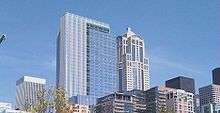
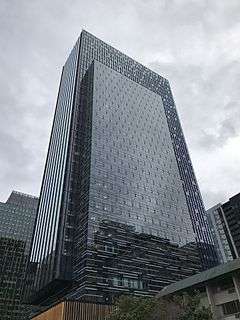
Seattle's economy is driven by a mix of older industrial companies, and "new economy" Internet and technology companies, service, design, and clean technology companies. The city's gross metropolitan product (GMP) was $231 billion in 2010, making it the 11th largest metropolitan economy in the United States.[149][150] The Port of Seattle, which also operates Seattle–Tacoma International Airport, is a major gateway for trade with Asia and cruises to Alaska. It also is the 8th largest port in the United States when measured by container capacity. Its maritime cargo operations merged with the Port of Tacoma in 2015 to form the Northwest Seaport Alliance.[151][152] Although it was affected by the Great Recession, Seattle has retained a comparatively strong economy, and is noted for start-up businesses, especially in green building and clean technologies.[153] In February 2010, the city government committed Seattle to become North America's first "climate neutral" city, with a goal of reaching zero net per capita greenhouse gas emissions by 2030.[154]
Large companies continue to dominate the business landscape. Five companies on Fortune 500's 2017 list of the United States' largest companies (based on total revenue) are headquartered in Seattle: Internet retailer Amazon.com (#12), coffee chain Starbucks (#131), department store Nordstrom (#188), forest products company Weyerhaeuser (#341) and freight forwarder Expeditors International of Washington (#429).[155] Other Fortune 500 companies commonly associated with Seattle are based in nearby Puget Sound cities. Warehouse club chain Costco (#16), the largest retail company in Washington, is based in Issaquah. Microsoft (#28) is located in Redmond. Furthermore, Bellevue is home to truck manufacturer Paccar (#164).[155] Other major companies headquartered in the area include Nintendo of America in Redmond, T-Mobile US in Bellevue, Expedia Inc. in Bellevue, and Providence Health & Services (the state's largest health care system and fifth largest employer) in Renton. The city has a reputation for heavy coffee consumption;[156] coffee companies founded or based in Seattle include Starbucks,[157] Seattle's Best Coffee,[158] and Tully's.[159] There are also many successful independent artisanal espresso roasters and cafés.[156]
Before moving its headquarters to Chicago, aerospace manufacturer Boeing (#24) was the largest company based in Seattle. Its largest division, Boeing Commercial Airplanes, is still headquartered in nearby Renton. The company also has large aircraft manufacturing plants in Everett and Renton; it remains the largest private employer in the Seattle metropolitan area.[160] In 2006 former Seattle Mayor Greg Nickels announced a desire to spark a new economic boom driven by the biotechnology industry. Major redevelopment of the South Lake Union neighborhood is underway in an effort to attract new and established biotech companies to the city, joining biotech companies Corixa (acquired by GlaxoSmithKline), Immunex (now part of Amgen), Trubion, and ZymoGenetics. Vulcan Inc., the holding company of billionaire Paul Allen, is behind most of the development projects in the region. While some see the new development as an economic boon, others have criticized Nickels and the Seattle City Council for pandering to Allen's interests at taxpayers' expense.[161] In 2005, Forbes ranked Seattle as the most expensive American city for buying a house based on the local income levels.[162]
Operating a hub at Seattle–Tacoma International Airport, Alaska Airlines maintains its headquarters in the city of SeaTac, next to the airport.[163]
Seattle is a hub for global health with the headquarters of the Bill & Melinda Gates Foundation, PATH, Infectious Disease Research Institute, Fred Hutchinson Cancer Research Center, and the Institute for Health Metrics and Evaluation. In 2015, the Washington Global Health Alliance counted 168 global health organizations in Washington state. Many are headquartered in Seattle.[164]
Culture
Many of Seattle's neighborhoods host one or more street fairs or parades.[165]
Nicknames
From 1869 until 1982, Seattle was known as the "Queen City".[166] Seattle's official nickname is the "Emerald City", the result of a contest held in 1981;[167][168] the reference is to the lush evergreen forests of the area. Seattle is also referred to informally as the "Gateway to Alaska" for being the nearest major city in the contiguous U.S. to Alaska, "Rain City" for its frequent cloudy and rainy weather, and "Jet City"[168] from the local influence of Boeing. The city has two official slogans or mottos: "The City of Flowers", meant to encourage the planting of flowers to beautify the city, and "The City of Goodwill", adopted prior to the 1990 Goodwill Games.[169] Seattle residents are known as Seattleites.
Performing arts
Seattle has been a regional center for the performing arts for many years. The century-old Seattle Symphony Orchestra has won many awards and performs primarily at Benaroya Hall.[170] The Seattle Opera and Pacific Northwest Ballet, which perform at McCaw Hall (opened in 2003 on the site of the former Seattle Opera House at Seattle Center), are comparably distinguished,[171][172] with the Opera being particularly known for its performances of the works of Richard Wagner[173][174] and the PNB School (founded in 1974) ranking as one of the top three ballet training institutions in the United States.[171] The Seattle Youth Symphony Orchestras (SYSO) is the largest symphonic youth organization in the United States.[175] The city also boasts lauded summer and winter chamber music festivals organized by the Seattle Chamber Music Society.[176]
The 5th Avenue Theatre, built in 1926, stages Broadway-style musical shows[177] featuring both local talent and international stars.[178] Seattle has "around 100" theatrical production companies[179] and over two dozen live theatre venues, many of them associated with fringe theatre;[180][181] Seattle is probably second only to New York for number of equity theaters[182] (28 Seattle theater companies have some sort of Actors' Equity contract).[179] In addition, the 900-seat Romanesque Revival Town Hall on First Hill hosts numerous cultural events, especially lectures and recitals.[183]
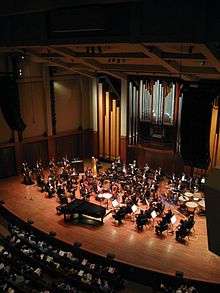
Between 1918 and 1951, there were nearly two dozen jazz nightclubs along Jackson Street, running from the current Chinatown/International District to the Central District. The jazz scene developed the early careers of Ray Charles, Quincy Jones, Bumps Blackwell, Ernestine Anderson, and others.[184]
Early popular musical acts from the Seattle/Puget Sound area include the collegiate folk group The Brothers Four, vocal group The Fleetwoods, 1960s garage rockers The Wailers and The Sonics, and instrumental surf group The Ventures, some of whom are still active.[184]
Seattle is considered the home of grunge music,[18] having produced artists such as Nirvana, Soundgarden, Alice in Chains, Pearl Jam, and Mudhoney, all of whom reached international audiences in the early 1990s.[184] The city is also home to such varied artists as avant-garde jazz musicians Bill Frisell and Wayne Horvitz, hot jazz musician Glenn Crytzer, hip hop artists Sir Mix-a-Lot, Macklemore, Blue Scholars, and Shabazz Palaces, smooth jazz saxophonist Kenny G, classic rock staples Heart and Queensrÿche, and alternative rock bands such as Foo Fighters, Harvey Danger, The Presidents of the United States of America, The Posies, Modest Mouse, Band of Horses, Death Cab for Cutie, and Fleet Foxes. Rock musicians such as Jimi Hendrix, Duff McKagan, and Nikki Sixx spent their formative years in Seattle.
The Seattle-based Sub Pop record company continues to be one of the world's best-known independent/alternative music labels.[184]
Over the years, a number of songs have been written about Seattle.
Seattle annually sends a team of spoken word slammers to the National Poetry Slam and considers itself home to such performance poets as Buddy Wakefield, two-time Individual World Poetry Slam Champ;[185] Anis Mojgani, two-time National Poetry Slam Champ;[186] and Danny Sherrard, 2007 National Poetry Slam Champ and 2008 Individual World Poetry Slam Champ.[187] Seattle also hosted the 2001 national Poetry Slam Tournament. The Seattle Poetry Festival is a biennial poetry festival that (launched first as the Poetry Circus in 1997) has featured local, regional, national, and international names in poetry.[188]
The city also has movie houses showing both Hollywood productions and works by independent filmmakers.[189] Among these, the Seattle Cinerama stands out as one of only three movie theaters in the world still capable of showing three-panel Cinerama films.[190]
Tourism
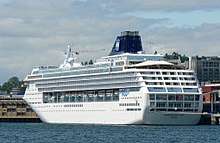
Among Seattle's prominent annual fairs and festivals are the 24-day Seattle International Film Festival,[192] Northwest Folklife over the Memorial Day weekend, numerous Seafair events throughout July and August (ranging from a Bon Odori celebration to the Seafair Cup hydroplane races), the Bite of Seattle, one of the largest Gay Pride festivals in the United States, and the art and music festival Bumbershoot, which programs music as well as other art and entertainment over the Labor Day weekend. All are typically attended by 100,000 people annually, as are the Seattle Hempfest and two separate Independence Day celebrations.[193][194][195][196]
Other significant events include numerous Native American pow-wows, a Greek Festival hosted by St. Demetrios Greek Orthodox Church in Montlake, and numerous ethnic festivals (many associated with Festál at Seattle Center).[197]
There are other annual events, ranging from the Seattle Antiquarian Book Fair & Book Arts Show;[198] an anime convention, Sakura-Con;[199] Penny Arcade Expo, a gaming convention;[200] a two-day, 9,000-rider Seattle to Portland Bicycle Classic;[201] and specialized film festivals, such as the Maelstrom International Fantastic Film Festival, the Seattle Asian American Film Festival (formerly known as the Northwest Asian American Film Festival), Children's Film Festival Seattle, Translation: the Seattle Transgender Film Festival, the Seattle Gay and Lesbian Film Festival, Seattle Latino Film Festival, and the Seattle Polish Film Festival.[202][203]
The Henry Art Gallery opened in 1927, the first public art museum in Washington.[204] The Seattle Art Museum (SAM) opened in 1933 and moved to their current downtown location in 1991 (expanded and reopened in 2007); since 1991, the 1933 building has been SAM's Seattle Asian Art Museum (SAAM).[205] SAM also operates the Olympic Sculpture Park (opened in 2007) on the waterfront north of the downtown piers. The Frye Art Museum is a free museum on First Hill.
Regional history collections are at the Log House Museum in Alki, Klondike Gold Rush National Historical Park, the Museum of History and Industry, and the Burke Museum of Natural History and Culture. Industry collections are at the Center for Wooden Boats and the adjacent Northwest Seaport, the Seattle Metropolitan Police Museum, and the Museum of Flight. Regional ethnic collections include the Nordic Heritage Museum, the Wing Luke Asian Museum, and the Northwest African American Museum. Seattle has artist-run galleries,[206] including ten-year veteran Soil Art Gallery,[207] and the newer Crawl Space Gallery.[208]
The Seattle Great Wheel, one of the largest Ferris wheels in the US, opened in June 2012 as a new, permanent attraction on the city's waterfront, at Pier 57, next to Downtown Seattle.[209] The city also has many community centers for recreation, including Rainier Beach, Van Asselt, Rainier, and Jefferson south of the Ship Canal and Green Lake, Laurelhurst, Loyal Heights north of the Canal, and Meadowbrook.[210]
Woodland Park Zoo opened as a private menagerie in 1889 but was sold to the city in 1899.[211] The Seattle Aquarium has been open on the downtown waterfront since 1977 (undergoing a renovation in 2006).[212] The Seattle Underground Tour is an exhibit of places that existed before the Great Fire.[213]
Since the middle 1990s, Seattle has experienced significant growth in the cruise industry, especially as a departure point for Alaska cruises. In 2008, a record total of 886,039 cruise passengers passed through the city, surpassing the number for Vancouver, BC, the other major departure point for Alaska cruises.[214]
Professional sports
| Club | Sport | League | Venue (capacity) | Founded | Titles | Record Attendance |
|---|---|---|---|---|---|---|
| Seattle Seahawks | American football | NFL | CenturyLink Field (69,000) | 1976 | 1 | 69,005 |
| Seattle Mariners | Baseball | MLB | T-Mobile Park (47,574) | 1977 | 0 | 46,596 |
| Seattle Kraken | Ice hockey | NHL | Climate Pledge Arena (TBD) | 2021 | — | — |
| Seattle Sounders FC | Soccer | MLS | CenturyLink Field (69,000) | 2007 | 2 | 69,274 |
| Seattle Dragons | American football | XFL | CenturyLink Field (69,000) | 2018 | — | — |
| Seattle Storm | Women's basketball | WNBA | Climate Pledge Arena (TBD) | 2000 | 3 | 7,486 |
| Seattle Reign FC | Soccer | NWSL | Memorial Stadium (12,000) | 2012 | 0 | 6,303[215] |
| Seattle Seawolves | Rugby | MLR | Starfire Sports (4,500)[216] | 2017 | 2 | 4,500 |
Seattle has three major men's professional sports teams: the National Football League (NFL)'s Seattle Seahawks, Major League Baseball (MLB)'s Seattle Mariners, and Major League Soccer (MLS)'s Seattle Sounders FC, with the National Hockey League (NHL)'s Seattle Kraken beginning play in 2021. Other professional sports teams include the Women's National Basketball Association (WNBA)'s Seattle Storm, who won the WNBA championship on three occasions in 2004 and 2010, and 2018;[217] and the Seattle Reign of the National Women's Soccer League.[218]
The Seattle Seahawks entered the National Football League in 1976 as an expansion team and have advanced to the Super Bowl three times: 2005, 2013 and 2014.[219] The team played in the Kingdome until it was imploded in 2000 and moved into Qwest Field (now CenturyLink Field) at the same site in 2003.[219] The Seahawks lost Super Bowl XL in 2005 to the Pittsburgh Steelers in Detroit, but won Super Bowl XLVIII in 2013 by defeating the Denver Broncos 43–8 at MetLife Stadium. The team advanced to the Super Bowl the following year, but lost to the New England Patriots in Super Bowl XLIX on a last-minute play.[219] Seahawks fans have set stadium noise records on several occasions and are collectively known as the "12th Man".[219][220]
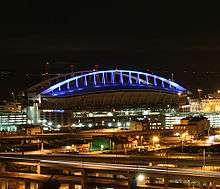
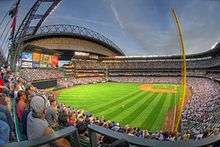
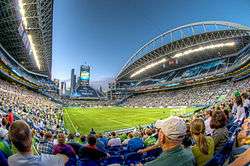
Seattle Sounders FC has played in Major League Soccer since 2009, sharing CenturyLink Field with the Seahawks, as a continuation of earlier teams in the lower divisions of American soccer.[221] The team set various attendance records in its first few seasons, averaging over 43,000 per match and placing themselves among the top 30 teams internationally.[222][223] The Sounders have won the MLS Supporters' Shield in 2014[224] and the U.S. Open Cup on four occasions: 2009, 2010, 2011, and 2014.[225] The Sounders won their first MLS Cup after defeating Toronto FC 5–4 in a penalty shootout, in MLS Cup 2016;[226] the team would go on to finish as runners-up to Toronto FC in the following cup.[227] CenturyLink Field hosted the 2009 MLS Cup, played between Real Salt Lake and the Los Angeles Galaxy in front of 46,011 spectators.[228] The Sounders would play their first MLS Cup at CenturyLink Field in 2019, once again against Toronto FC, and won the game 3–1, earning their second MLS Cup title in front of a club-record attendance of 69,274.[229]
Seattle also has a Major League Rugby team, the Seattle Seawolves, who play at Starfire Sports in Tukwila, a small stadium that is also used by the Sounders for their U.S. Open Cup matches.[230] The team began to play in 2018 and won the league's inaugural championship.[231] They successfully defended the title in the 2019 season.[232] Seattle also is home to the Seattle Dragons of the XFL which began play in 2020 at CenturyLink Field.[233]
Seattle's professional sports history began at the start of the 20th century with the PCHA's Seattle Metropolitans, which in 1917 became the first American hockey team to win the Stanley Cup.[234] Seattle was awarded a Major League Baseball franchise, the Seattle Pilots, in 1969. The team played at Sick's Stadium in Mount Baker for one season before relocating to Milwaukee and becoming the Milwaukee Brewers.[235] The city, county, and state governments sued the league and was offered a second expansion team, the Seattle Mariners, who began play at the Kingdome in 1977. The Mariners struggled in the stadium and moved to a purpose-built baseball stadium, T-Mobile Park (formerly Safeco Field), in 1999.[236][237] The Mariners have never reached a World Series and only appeared in the MLB playoffs four times, all between 1995 and 2001, despite having Hall of Fame players and candidates like Ken Griffey Jr., Randy Johnson, Ichiro Suzuki, and Alex Rodriguez.[238] The team tied the all-time single regular season wins record in 2001 with 116 wins.[239] Since 2001, the Mariners have failed to qualify for the playoffs—the longest active postseason drought in North American sports, at 18 seasons.[240]
From 1967 to 2008 Seattle was also home to a National Basketball Association (NBA) franchise: the Seattle SuperSonics, who were the 1978–79 NBA champions. The SuperSonics relocated to Oklahoma City and became the Oklahoma City Thunder for the 2008–09 season.[241][242]
The Major League Baseball All-Star Game was held in Seattle twice, first at the Kingdome in 1979 and again at Safeco Field in 2001.[243] The NBA All-Star Game was also held in Seattle twice: the first in 1974 at the Seattle Center Coliseum and the second in 1987 at the Kingdome.[244]
Seattle also boasts two collegiate sports teams based at the University of Washington and Seattle University, both competing in NCAA Division I for various sports.[245] The University of Washington's athletic program, nicknamed the Huskies, competes in the Pac-12 Conference, and Seattle University's athletic program, nicknamed the Redhawks, mostly competes in the Western Athletic Conference. The Huskies teams use several facilities, including the 70,000-seat Husky Stadium for football and the Hec Edmundson Pavilion for basketball and volleyball.[246][247] The two schools have basketball and soccer teams that compete against each other in non-conference games and have formed a local rivalry due to their sporting success.[245]
The Seattle Thunderbirds hockey team plays in the Canadian major-junior Western Hockey League and are based in the Seattle suburb of Kent.[248] Seattle successfully applied for a new expansion team with the National Hockey League called the Seattle Kraken, which will make its first appearance in 2021.[249][250][251] A major renovation of what was KeyArena (now Climate Pledge Arena) began in 2018 to accommodate the NHL team.[252] The NHL ownership group reached its goal of 10,000 deposits within 12 minutes of opening a ticket drive, which later increased to 25,000 in 75 minutes.[253]
Parks and recreation
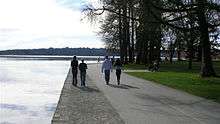
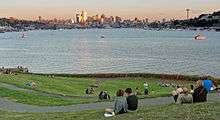
Seattle's mild, temperate, marine climate allows year-round outdoor recreation, including walking, cycling, hiking, skiing, snowboarding, kayaking, rock climbing, motor boating, sailing, team sports, and swimming.[254]
In town, many people walk around Green Lake, through the forests and along the bluffs and beaches of 535-acre (2.2 km2) Discovery Park (the largest park in the city) in Magnolia, along the shores of Myrtle Edwards Park on the Downtown waterfront, along the shoreline of Lake Washington at Seward Park, along Alki Beach in West Seattle, or along the Burke-Gilman Trail.
Gas Works Park features the preserved superstructure of a coal gasification plant closed in 1956. Located across Lake Union from downtown, the park provides panoramic views of the Seattle skyline.
Also popular are hikes and skiing in the nearby Cascade or Olympic Mountains and kayaking and sailing in the waters of Puget Sound, the Strait of Juan de Fuca, and the Strait of Georgia. In 2005, Men's Fitness magazine named Seattle the fittest city in the United States.[255]
Government and politics
Seattle is a charter city, with a mayor–council form of government. From 1911 to 2013, Seattle's nine city councillors were elected at large, rather than by geographic subdivisions.[256] For the 2015 election, this changed to a hybrid system of seven district members and two at-large members as a result of a ballot measure passed on November 5, 2013. The only other elected offices are the city attorney and Municipal Court judges. All city offices are officially non-partisan.[257]
Like some other parts of the United States, government and laws are also run by a series of ballot initiatives (allowing citizens to pass or reject laws), referenda (allowing citizens to approve or reject legislation already passed), and propositions (allowing specific government agencies to propose new laws or tax increases directly to the people).
Jenny Durkan was elected as mayor in the 2017 mayoral election and took office on November 28, 2017.[258] The mayor's office also includes two deputy mayors, appointed to advise the mayor on policies. As of 2017, the city's deputy mayors are Michael Fong and Shefali Ranganathan.[259]
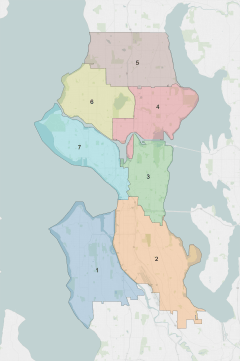
Seattle's political culture is very liberal and progressive for the United States, with over 80% of the population voting for the Democratic Party. All precincts in Seattle voted for Democratic Party candidate Barack Obama in the 2012 presidential election.[260] In partisan elections for the Washington State Legislature and United States Congress, nearly all elections are won by Democrats. Although local elections are nonpartisan, most of the city's elected officials are known to be Democrats.
In 1926, Seattle became the first major American city to elect a female mayor, Bertha Knight Landes.[261] It has also elected an openly gay mayor, Ed Murray,[262] and a third-party socialist councillor, Kshama Sawant.[263] For the first time in United States history, an openly gay black woman was elected to public office when Sherry Harris was elected as a Seattle city councillor in 1991.[264][265] The majority of the city council is female.[266]
Federally, Seattle is split between two congressional districts. Most of the city is in Washington's 7th congressional district, represented by Democrat Pramila Jayapal, the first Indian-American woman elected to Congress.[267] She succeeded 28-year incumbent and fellow Democrat Jim McDermott. Part of southwestern Seattle is in the 9th District, represented by Democrat Adam Smith.
Seattle is widely considered one of the most socially liberal cities in the United States, even surpassing Portland.[268] In the 2012 U.S. general election, a majority of Seattleites voted to approve Referendum 74 and legalize gay marriage in Washington state.[269] In the same election, an overwhelming majority of Seattleites also voted to approve the legalization of the recreational use of cannabis in the state.[270] Like much of the Pacific Northwest (which has the lowest rate of church attendance in the United States and consistently reports the highest percentage of atheism[271][272]), church attendance, religious belief, and political influence of religious leaders are much lower than in other parts of America.[273]
In July 2012, Seattle banned plastic shopping bags.[274] In June 2014 the city passed a local ordinance to increase the minimum wage to $15 an hour on a staged basis from 2015 to 2021. When fully implemented the $15 hourly rate will be the highest minimum wage in the nation.[275]
On October 6, 2014, Seattle officially replaced Columbus Day with Indigenous Peoples' Day, honoring Seattle's Native American community and acknowledging the controversies surrounding the legacy of Christopher Columbus.[276][277]
On May 9, 2017, Mayor Murray announced he would not seek re-election[278] following a lawsuit alleging sexual abuse of several teenaged boys in the 1980s.[279] Murray resigned as mayor on September 12, 2017, effective at 5 p.m. on September 13, 2017,[280] hours after The Seattle Times reported a fifth allegation of child sexual abuse.[281]
In July 2017, the Seattle City Council unanimously approved an income tax on Seattle residents, making the city the only one in the state with an income tax.[282] The new income tax was ruled unconstitutional in a ruling by King County Superior Court and thus was not allowed to proceed. The city is expected to appeal this ruling.[283]
Education
Of the city's population over the age of 25, 53.8% (vs. a national average of 27.4%) hold a bachelor's degree or higher, and 91.9% (vs. 84.5% nationally) have a high school diploma or equivalent. A 2008 United States Census Bureau survey showed that Seattle had the highest percentage of college and university graduates of any major U.S. city.[284] The city was listed as the most literate of the country's 69 largest cities in 2005 and 2006, the second most literate in 2007 and the most literate in 2008 in studies conducted by Central Connecticut State University.[285]
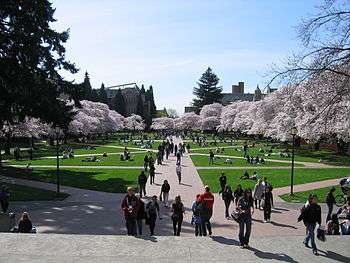
Seattle Public Schools desegregated without a court order[286] but continue to struggle to achieve racial balance in a somewhat ethnically divided city (the south part of town having more ethnic minorities than the north).[287] In 2007, Seattle's racial tie-breaking system was struck down by the United States Supreme Court, but the ruling left the door open for desegregation formulae based on other indicators (e.g., income or socioeconomic class).[288]
The public school system is supplemented by a moderate number of private schools: Five of the private high schools are Catholic, one is Lutheran, and six are secular.[289]
Seattle is home to the University of Washington, as well as the institution's professional and continuing education unit, the University of Washington Educational Outreach. The 2017 U.S. News & World Report ranked the University of Washington at #11 in the world, tied with Johns Hopkins University.[290] The UW receives more federal research and development funding than any public institution. Over the last 10 years, it has also produced more Peace Corps volunteers than any other U.S. university.[291] Seattle also has a number of smaller private universities including Seattle University and Seattle Pacific University, the former a Jesuit Catholic institution, the latter a Free Methodist institution. Universities aimed at the working adult are the City University and Antioch University. Colleges within the Seattle Colleges District system, comprise North, Central, and South. Seminaries include Western Seminary and a number of arts colleges, such as Cornish College of the Arts, Pratt Fine Arts Center, and The Art Institute of Seattle. In 2001, Time magazine selected Seattle Central Community College as community college of the year, stating the school "pushes diverse students to work together in small teams".[292]
Media
As of 2019, Seattle has one major daily newspaper, The Seattle Times. The Seattle Post-Intelligencer, known as the P-I, published a daily newspaper from 1863 to March 17, 2009, before switching to a strictly on-line publication. There is also the Seattle Daily Journal of Commerce,[293] and the University of Washington publishes The Daily, a student-run publication, when school is in session. The most prominent weeklies are the Seattle Weekly and The Stranger; both consider themselves "alternative" papers.[294] The weekly LGBT newspaper is the Seattle Gay News. Real Change is a weekly street newspaper that is sold mainly by homeless persons as an alternative to panhandling. There are also several ethnic newspapers, including The Facts, Northwest Asian Weekly and the International Examiner as well as numerous neighborhood newspapers.
Seattle is also well served by television and radio, with all major U.S. networks represented, along with at least five other English-language stations and two Spanish-language stations.[295] Seattle cable viewers also receive CBUT 2 (CBC) from Vancouver, British Columbia.
Non-commercial radio stations include NPR affiliates KUOW-FM 94.9 and KNKX 88.5 (Tacoma), as well as classical music station KING-FM 98.1. Other non-commercial stations include KEXP-FM 90.3 (affiliated with the UW), community radio KBCS-FM 91.3 (affiliated with Bellevue College), and high school radio KNHC-FM 89.5, which broadcasts an electronic dance music radio format, is owned by the public school system and operated by students of Nathan Hale High School. Many Seattle radio stations are available through Internet radio, with KEXP in particular being a pioneer of Internet radio.[296] Seattle also has numerous commercial radio stations. In a March 2012 report by the consumer research firm Arbitron, the top FM stations were KRWM (adult contemporary format), KIRO-FM (news/talk), and KISW (active rock) while the top AM stations were KOMO (AM) (all news), KJR (AM) (all sports), KIRO (AM) (all sports).[297]
Seattle-based online magazines Worldchanging and Grist.org were two of the "Top Green Websites" in 2007 according to TIME.[298]
Seattle also has many online news media websites. The two largest are The Seattle Times and the Seattle Post-Intelligencer.
Infrastructure
Health systems
The University of Washington is consistently ranked among the country's leading institutions in medical research, earning special merits for programs in neurology and neurosurgery. Seattle has seen local developments of modern paramedic services with the establishment of Medic One in 1970.[299] In 1974, a 60 Minutes story on the success of the then four-year-old Medic One paramedic system called Seattle "the best place in the world to have a heart attack".[300]
Three of Seattle's largest medical centers are located on First Hill. Harborview Medical Center, the public county hospital, is the only Level I trauma hospital in a region that includes Washington, Alaska, Montana, and Idaho.[301] Virginia Mason Medical Center and Swedish Medical Center's two largest campuses are also located in this part of Seattle, including the Virginia Mason Hospital. This concentration of hospitals resulted in the neighborhood's nickname "Pill Hill".[302]
Located in the Laurelhurst neighborhood, Seattle Children's, formerly Children's Hospital and Regional Medical Center, is the pediatric referral center for Washington, Alaska, Montana, and Idaho. The Fred Hutchinson Cancer Research Center has a campus in the Eastlake neighborhood. The University District is home to the University of Washington Medical Center which, along with Harborview, is operated by the University of Washington. Seattle is also served by a Veterans Affairs hospital on Beacon Hill, a third campus of Swedish in Ballard, and Northwest Hospital and Medical Center near Northgate Mall.
Transportation
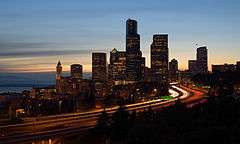
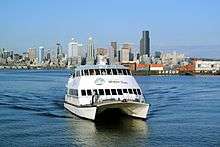
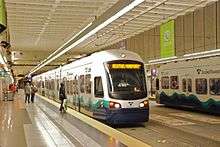
_2005_05_23.jpg)
The first streetcars appeared in 1889 and were instrumental in the creation of a relatively well-defined downtown and strong neighborhoods at the end of their lines. The advent of the automobile sounded the death knell for rail in Seattle. Tacoma–Seattle railway service ended in 1929 and the Everett–Seattle service came to an end in 1939, replaced by automobiles running on the recently developed highway system. Rails on city streets were paved over or removed, and the opening of the Seattle trolleybus system brought the end of streetcars in Seattle in 1941. This left an extensive network of privately owned buses (later public) as the only mass transit within the city and throughout the region.[303]
King County Metro provides frequent stop bus service within the city and surrounding county, as well as the South Lake Union Streetcar line and the First Hill Streetcar line.[304] Seattle is one of the few cities in North America whose bus fleet includes electric trolleybuses. Sound Transit provides an express bus service within the metropolitan area, two Sounder commuter rail lines between the suburbs and downtown, and its Central Link light rail line between the University of Washington and Angle Lake.[305] Washington State Ferries, which manages the largest network of ferries in the United States and third largest in the world, connects Seattle to Bainbridge and Vashon Islands in Puget Sound and to Bremerton and Southworth on the Kitsap Peninsula.[306] King Street Station in Pioneer Square serves Amtrak intercity trains and Sounder commuter trains, and is located adjacent to the International District/Chinatown light rail station.[307]
According to the 2007 American Community Survey, 18.6% of Seattle residents used one of the three public transit systems that serve the city, giving it the highest transit ridership of all major cities without heavy or light rail prior to the completion of Sound Transit's Central Link line.[308] The city has also been described by Bert Sperling as the fourth most walkable U.S. city and by Walk Score as the sixth most walkable of the fifty largest U.S. cities.[309][310]
Seattle–Tacoma International Airport, locally known as Sea-Tac Airport and located just south in the neighboring city of SeaTac, is operated by the Port of Seattle and provides commercial air service to destinations throughout the world. Closer to downtown, Boeing Field is used for general aviation, cargo flights, and testing/delivery of Boeing airliners. A secondary passenger airport, Paine Field, opened in 2019 and is located in Everett, 25 miles (40 km) north of Seattle. It is predominantly used by Boeing and their large assembly plant located nearby.[311][312]
The main mode of transportation, however, is Seattle's streets, which are laid out in a cardinal directions grid pattern, except in the central business district where early city leaders Arthur Denny and Carson Boren insisted on orienting their plats relative to the shoreline rather than to true North.[313] Only two roads, Interstate 5 and State Route 99 (both limited-access highways) run uninterrupted through the city from north to south. From 1953 to 2019, State Route 99 ran through downtown Seattle on the Alaskan Way Viaduct, an elevated freeway on the waterfront. However, due to damage sustained during the 2001 Nisqually earthquake the viaduct will be replaced by a tunnel. The 2-mile (3.2 km) Alaskan Way Viaduct replacement tunnel was originally scheduled to be completed in December 2015 at a cost of US$4.25 billion. The world's largest tunnel boring machine, named "Bertha", was commissioned for the project, measuring 57 feet (17 m) in diameter. The tunnel's opening was delayed to February 2019 due to issues with the tunnel boring machine, which included a two-year halt in excavation.[314] Seattle has the 8th worst traffic congestion of all American cities, and is 10th among all North American cities according to Inrix.[315]
The city has started moving away from the automobile and towards mass transit. From 2004 to 2009, the annual number of unlinked public transportation trips increased by approximately 21%.[316] In 2006, voters in King County passed the Transit Now proposition, which increased bus service hours on high ridership routes and paid for five limited-stop bus lines called RapidRide.[317] After rejecting a roads and transit measure in 2007, Seattle-area voters passed a transit only measure in 2008 to increase ST Express bus service, extend the Link light rail system, and expand and improve Sounder commuter rail service.[318] A light rail line from downtown heading south to Sea-Tac Airport began service on December 19, 2009, giving the city its first rapid transit line with intermediate stations within the city limits. An extension north to the University of Washington opened on March 19, 2016[319] and further extensions are planned to reach Northgate and Lynnwood to the north, Federal Way to the south, and Bellevue and Redmond to the east by 2024.[320][321] Voters in the Puget Sound region approved an additional tax increase in November 2016 to expand light rail to West Seattle and Ballard as well as Tacoma, Everett, and Issaquah.[322]
Utilities
Water and electric power are municipal services, provided by Seattle Public Utilities and Seattle City Light respectively. Other utility companies serving Seattle include Puget Sound Energy (natural gas, electricity), Seattle Steam Company (steam), Waste Management, Inc and Recology CleanScapes (curbside recycling, composting, and solid waste removal), CenturyLink, Frontier Communications, Wave Broadband, and Comcast (telecommunications and television).
About 90% of Seattle's electricity is produced using hydropower. Less than 2% of electricity is produced using fossil fuels.[323]
Notable people
Sister cities
Seattle is partnered with:[324]


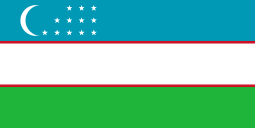



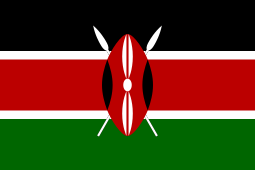


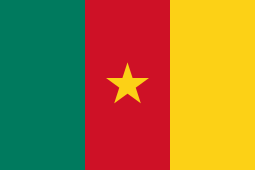
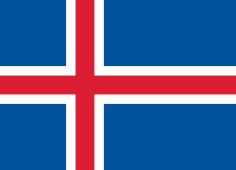










See also
- List of neighborhoods in Seattle
- National Register of Historic Places listings in Seattle, Washington
- Seattle Freeze
- Seattle process
- Seattle tugboats
- Smog Watch
- Tillicum Village
References
Footnotes
- Mean monthly maxima and minima (i.e. the highest and lowest temperature readings during an entire month or year) calculated based on data at said location from 1981 to 2010.
- Official records are restricted to SeaTac Airport from January 1945 onward.[120]
Citations
- "2019 U.S. Gazetteer Files". United States Census Bureau. Retrieved August 7, 2020.
- "U.S. Census website". United States Census Bureau. Retrieved December 19, 2012.
- "Population and Housing Unit Estimates". Retrieved May 21, 2020.
- Balk, Gene (October 2, 2012). "When can you call yourself a Seattleite?". The Seattle Times. Retrieved October 19, 2018.
- Wilson-Codega, Lily. "About Seattle Sister Cities - Sister Cities | seattle.gov". City of Seattle. Retrieved October 19, 2018.
- "Zip Code Lookup". USPS. Archived from the original on November 12, 2015.
- "Zip Code Lookup". USPS. Archived from the original on November 12, 2015.
- "Seattle". Geographic Names Information System. United States Geological Survey.
- Balk, Gene (March 26, 2018). "Seattle just one of 5 big metros last year that had more people move here than leave, census data show". The Seattle Times. Retrieved May 7, 2018.
- Balk, Gene (May 22, 2014). "Census: Seattle is the fastest-growing big city in the U.S." The Seattle Times. FYI Guy. Archived from the original on February 22, 2018. Retrieved May 27, 2014.
- Balk, Gene (May 21, 2015). "Seattle no longer America's fastest-growing big city". The Seattle Times. FYI Guy. Retrieved November 20, 2015.
- Balk, Gene (May 25, 2017). "Seattle once again nation's fastest-growing big city; population exceeds 700,000". The Seattle Times. Retrieved May 30, 2017.
- "Seaport Statistics". Port of Seattle. Retrieved January 28, 2016.
- Doree Armstrong (October 4, 2007). "Feel the beat of history in the park and concert hall at two family-friendly events". Seattle Post-Intelligencer. Retrieved November 1, 2007.
- Andrew Craig Magnuson (July 20, 2014). "In Search of the Schooner Exact". Andrew Craig Magnuson. Retrieved September 27, 2014.
- Gene Balk (March 20, 2015). "Survey ranks Seattle area 5th for LGBT population – so many people is that?". The Seattle Times.
- "Minimum wage climbs to $16 per hour for Seattle's largest employers". King 5 News. December 30, 2018.
- Heylin, Clinton (2007). Babylon's Burning: From Punk to Grunge. Conongate. p. 606. ISBN 978-1-84195-879-8.
- Greg Lange (October 15, 2000). "Seattle and King County's First European Settlers". HistoryLink. Retrieved October 14, 2007.
- "The people and their land". Puget Sound Native Art and Culture. Seattle Art Museum. July 4, 2003. Archived from the original on June 13, 2010. Retrieved April 21, 2006. (Publication date per "Native Art of the Northwest Coast: Collection Insight")
- Walt Crowley (March 13, 2003). "Native American tribes sign Point Elliott Treaty at Mukilteo on January 22, 1855". HistoryLink. Retrieved October 14, 2007.
- George Vancouver; John Vancouver (1801). A voyage of discovery to the North Pacific ocean, and round the world. London: J. Stockdale. ISBN 978-0-665-18642-4.
- Greg Lange (March 8, 2003). "Luther Collins Party, first King County settlers, arrive at mouth of Duwamish River on September 14, 1851". HistoryLink. Retrieved October 14, 2007.
- Greg Lange (December 16, 2000). "Collins party encounters Denny party scouts at Duwamish Head near future site of Seattle on September 27, 1851". HistoryLink. Retrieved October 14, 2007.
- Walt Crowley (August 31, 1998). "Seattle – a Snapshot History of Its Founding". HistoryLink. Retrieved October 14, 2007.
- James R. Warren (October 23, 2001). "Seattle at 150: Charles Terry's unlimited energy influenced a city". Seattle Post-Intelligencer. Retrieved October 14, 2007.
- Speidel, William (1967). Sons of the Profits. Seattle: Nettle Creek Publishing Company. pp. 27–55.
- Greg Lange (March 28, 2001). "Charles Terry homesteads site of Alki business district on May 1, 1852". HistoryLink. Retrieved October 14, 2007.
- Thomas R. Speer, ed. (July 22, 2004). "Chief Si'ahl and His Family". Duwamish Tribe. Archived from the original on February 13, 2009. Retrieved October 14, 2007. Includes bibliography.
- Kenneth G. Watson (January 18, 2003). "Seattle, Chief Noah". HistoryLink. Retrieved October 14, 2007.
- Murray Morgan (1982) [First published 1951, 1982 revised and updated, first illustrated edition]. Skid Road: an Informal Portrait of Seattle. Seattle and London: University of Washington Press. p. 20. ISBN 978-0-295-95846-0.
- Dawn Bates; Thom Hess; Vi Hilbert (1994). dᶻidᶻəlal̓ič. Lushootseed Dictionary. University of Washington Press. p. 91. ISBN 978-0-295-97323-4.
- Greg Lange; Cassandra Tate (November 4, 1998). "Legislature incorporates the Town of Seattle for the first time on January 14, 1865". HistoryLink. Retrieved October 14, 2007.
- "Seattle City Symbols". City of Seattle. Retrieved February 28, 2014.
- Emmett Shear (Spring 2002). "Seattle: Booms and Busts". Yale University. Author has granted blanket permission for material from that paper to be reused in Wikipedia. Now at s:Seattle: Booms and Busts.
- Junius Rochester (October 7, 1998). "Yesler, Henry L." HistoryLink. Retrieved October 1, 2007.
- George Kinnear (January 1, 1911). "Anti-Chinese Riots At Seattle, Wn.. February 8, 1876". Seattle Post-Intelligencer. Retrieved October 4, 2007. Kinnear's article, originally appearing in the Seattle Post-Intelligencer, was later privately published in a small volume.
- "Historical Census Statistics On Population Totals By Race, 1790 to 1990, and By Hispanic Origin, 1970 to 1990, For Large Cities And Other Urban Places in the United States". U.S. Census Bureau. Archived from the original on August 6, 2012. Retrieved December 18, 2011.
- Walt Crowley (January 25, 2003). "Seattle burns down in the Great Fire on June 6, 1889". HistoryLink. Retrieved October 1, 2007.
- "Hard Drive to the Klondike: Promoting Seattle During the Gold Rush". National Park Service. February 18, 2003. Archived from the original on November 3, 2007. Retrieved October 1, 2007.
- J. Kingston Pierce (November 24, 1999). "Panic of 1893: Seattle's First Great Depression". HistoryLink. Retrieved December 18, 2008.
- Tom (May 22, 2015). "Bird's-Eye View of Seattle and King County in 1891". Cool Old Photos. Retrieved March 5, 2019.
- Greg Lange (January 14, 1999). "Klondike Gold Rush". HistoryLink.org. Retrieved October 1, 2007.
- "Park History – Olmsted Parks". Seattle Parks and Recreation. Retrieved November 30, 2015.
- Greg Lange (January 14, 1999). "Alaska–Yukon–Pacific Exposition's final day is on October 16, 1909". HistoryLink. Retrieved November 6, 2007.
- Greg Lange (May 5, 2003). "Alaska–Yukon–Pacific Exposition opens for a 138-day run on June 1, 1909". HistoryLink. Retrieved October 1, 2007.
- Patrick McRoberts (February 4, 1999). "Seattle General Strike, 1919, Part I". HistoryLink. Retrieved October 1, 2007.
- BOLA Architecture + Planning & Northwest Archaeological Associates, Inc., "Port of Seattle North Bay Project DEIS: Historic and Cultural Resources" (PDF). Archived from the original (PDF) on July 23, 2011. Retrieved July 26, 2008., Port of Seattle, April 5, 2005, pp. 12–13 (which is pp. 14–15 of the PDF). Retrieved July 25, 2008.
- Nash, Phil (2009). "Asian Pacific Americans During the Great Depression". AsianWeek. 5: 4. ProQuest 367348258.
- Dorpat, Paul; McCoy, Genevieve (1998). Building Washington. Seattle: Tartu Publications.
- Berner, Richard (1992). Seattle 1921-1940: From Boom to Bust. Seattle: Charles Press.
- Mullins, William (1991). The Depression and the Urban West Coast, 1929-1933. Indianapolis: Indiana University Press.
- Mullins, William (1975). San Francisco and Seattle During the Hoover Years of the Depression: 1929-1933. Seattle: University of Washington.
- Roy, Donald (1935). Hooverville: A Study of a Community of Homeless Men in Seattle. Seattle: University of Washington.
- Orleck, Annelise (1993). "We Are the Mythical Thing Called the Public". Feminist Studies. 19: 147–172. doi:10.2307/3178357. JSTOR 3178357.
- Moreo, Dominic (1996). Schools in the Great Depression. New York: Garland Publishing.
- Gates, Charles (1961). The First Century at the University of Washington. Seattle: University of Washington Press.
- "History of Seattle: The "Jet City" Takes Off". Seattle's Convention and Visitors Bureau. Archived from the original on September 5, 2015.
- Alan J. Stein (April 18, 2000). "Century 21 – The 1962 Seattle World's Fair, Part I". HistoryLink. Retrieved October 1, 2007.
- Greg Lange (June 8, 1999). "Billboard appears on April 16, 1971, near Sea–Tac, reading: Will the Last Person Leaving Seattle—Turn Out the Lights". HistoryLink. Retrieved October 1, 2007. The real estate agents were Bob McDonald and Jim Youngren, as cited at Don Duncan, Washington: the First One Hundred Years, 1889–1989 (Seattle: The Seattle Times, 1989), 108, 109–110; The Seattle Times, February 25, 1986, p. A3; Ronald R. Boyce, Seattle–Tacoma and the Southern Sound (Bozeman, Montana: Northwest Panorama Publishing, 1986), 99; Walt Crowley, Rites of Passage: A Memoir of the Sixties in Seattle (Seattle: University of Washington Press, 1995), 297.
- Kristi Heim (March 21, 2006). "Chicago's got the headquarters, but Seattle's still Jet City, USA". The Seattle Times. Retrieved October 1, 2007.
- Natalie Singer (September 7, 2006). "23 years haven't erased grief caused by Wah Mee Massacre". The Seattle Times. Retrieved December 18, 2008.
- "Information for Students: Key Events In Microsoft History". Microsoft Visitor Center Student Information. Archived from the original on August 5, 2010. Retrieved October 1, 2005.
- Strategic Planning Office (March 2011). "Basic Population and Housing Unit Characteristics: Decennial Census" (PDF). City of Seattle. Retrieved February 28, 2014.
- Jane Hodges (August 20, 2005). "Seattle area 'sticker shock' is a matter of perception". The Seattle Times. Retrieved September 29, 2007.
- Fox, David J. (June 28, 1993). "'Sleepless' Surprises Hollywood : Movies: Romantic comedy opens with a strong $17 million; 'Last Action Hero' falls 50% at box office. 'Jurassic Park' collects another $28 million. – latimes". Articles.latimes.com. Retrieved May 29, 2015.
- Lee Gomes (November 8, 2006). "The Dot-Com Bubble Is Reconsidered – And Maybe Relived". The Wall Street Journal. Retrieved October 4, 2007. Gomes considers the bubble to have ended with the peak of the March 2000 peak of NASDAQ.
- David M. Ewalt (January 27, 2005). "The Bubble Bowl". Forbes. Archived from the original on March 3, 2016. Retrieved October 4, 2007. Ewalt refers to the advertising on Super Bowl XXXIV (January 2000) as "the dot-com bubble's Waterloo".
- David Wilma (February 25, 2004). "Ted Turner's Goodwill Games open in Seattle on July 20, 1990". HistoryLink. Retrieved October 1, 2007.
- Pray, D., Helvey-Pray Productions (1996). Hype!. Republic Pictures.
- David Wilma (March 1, 2000). "Protests against the World Trade Organization (WTO) continue on December 1, 1999". HistoryLink. Retrieved October 1, 2007.
- "Double dose of woe strikes historic Seattle neighborhood". CNN. March 1, 2001. Retrieved December 11, 2008.
- Rosenberg, Mike (December 30, 2016). "Seattle's record apartment boom is ready to explode; what it means for rents". The Seattle Times. Retrieved January 11, 2018.
- Rosenberg, Mike (March 10, 2017). "Record construction frenzy sweeps downtown Seattle; more building to come". seattletimes.com. Retrieved March 27, 2017.
- Gene Balk (September 13, 2015). "Seattle's population boom approaching Gold Rush numbers". The Seattle Times. Retrieved November 30, 2015.
- Daniel DeMay (October 13, 2015). "Thanks to an influx of tech jobs, Seattle is booming – but it's not easy to deal with". Seattle Post-Intelligencer. Retrieved November 30, 2015.
- "National Climatic Data Center: Cloudiness – Mean Number of Days". National Oceanic and Atmospheric Administration. Archived from the original on October 16, 2012.
- "Chapter Three – Native American Cultures". The First Americans. Four Directions. Retrieved October 20, 2007.
- Howard Morphy (1999). "Traditional and modern visual art of hunting and gathering peoples". In Richard B. Lee (ed.). The Cambridge Encyclopedia of Hunters and Gatherers. Cambridge University Press. p. 443. ISBN 978-0-521-57109-8.
- Department of Transportation. "Highest Elevations in Seattle and The Twenty Steepest Streets in Seattle". City of Seattle. Retrieved October 4, 2007.
- Crowley, Walt (January 14, 2003). "Seattle's Seven Hills". HistoryLink. Retrieved April 12, 2010.
- Schulz, William H. (November 15, 2006). "Landslide susceptibility revealed by LIDAR imagery and historical records, Seattle, Washington" (PDF). United States Geological Survey. Archived from the original (PDF) on March 18, 2009. Retrieved March 5, 2009.
- Peterson, Lorin & Davenport, Noah C. (1950), Living in Seattle, Seattle: Seattle Public Schools, p. 44.
- Walt Crowley (March 2, 2001). "Earthquake registering 6.8 on Richter Scale jolts Seattle and Puget Sound on February 28, 2001". HistoryLink. Retrieved October 1, 2007.
- Greg Lange (February 1, 1999). "Earthquake hits Washington Territory on December 14, 1872". HistoryLink. Retrieved October 5, 2007.
- Greg Lange (January 1, 2000). "Earthquake hits Puget Sound area on April 13, 1949". HistoryLink. Retrieved October 5, 2007.
- Greg Lange (March 2, 2000). "Earthquake rattles Western Washington on April 29, 1965". HistoryLink. Retrieved October 4, 2007.
- "Seattle Fault Zone – implications for earthquake hazards". United States Geological Survey. June 15, 2007. Archived from the original on September 16, 2007. Retrieved October 4, 2007.
- Ray Flynn; Kyle Fletcher (July 2, 2002). "The Cascadia Subduction Zone – What is it? How big are the quakes? How Often?". University of Washington Department of Earth and Space Sciences. Archived from the original on April 17, 2009. Retrieved October 4, 2007.
- "US Gazetteer files: 2010, 2000, and 1990". United States Census Bureau. February 12, 2011. Retrieved April 23, 2011.
- "U.S. Climate Data".
- "Seattle the next Saint-Tropez? Not quite, but Mediterranean climate trends continue". Q13 FOX News. June 8, 2018. Retrieved December 1, 2018.
- "Seattle, Washington Köppen Climate Classification (Weatherbase)". Weatherbase. Retrieved November 4, 2018.
- Bloom, Jessi; Boehnlein, Dave (February 4, 2016). Practical Permaculture: for Home Landscapes, Your Community, and the Whole Earth. Timber Press. ISBN 9781604697421.
- Climatology. Jones & Bartlett Publishers. 1942. p. 207. ISBN 978-1-284-05427-9.
- "Seattle - WA" (PDF). South Seattle College. Archived from the original (PDF) on November 4, 2018.
- Kottek, M.; J. Grieser; C. Beck; B. Rudolf; F. Rubel (2006). "World Map of the Köppen-Geiger climate classification updated". Meteorol. Z. 15 (3): 259–263. Bibcode:2006MetZe..15..259K. doi:10.1127/0941-2948/2006/0130. Retrieved February 15, 2007.
- "3 Concept and classification". Global ecological zoning for the global forest resources assessment 2000. Rome: UN Food and Agriculture Organization. Forestry Department. 2001. Retrieved December 30, 2011.
- Dale D. Goble; Paul W. Hirt (March 15, 2012). Northwest Lands, Northwest Peoples: Readings in Environmental History. University of Washington Press. pp. 58–59. ISBN 978-0-295-80137-7.
- "USDA Plant Hardiness Zone Map". United States Department of Agriculture. Archived from the original on February 27, 2014. Retrieved June 1, 2014.
- "What Is The Olympic Rain Shadow?". KOMOTV.com. October 4, 2006. Retrieved September 28, 2007.
- "Mean Number of Days with Precipitation 0.01 Inch or More". NOAA Satellites and Information. Archived from the original on September 28, 2013.
- Sistek, Scott (October 4, 2006). "What is offshore flow?". Archived from the original on January 26, 2016.
- "What are the different snow scenarios?". December 25, 2015.
- "NowData - NOAA Online Weather Data". National Oceanic and Atmospheric Administration. Retrieved March 20, 2019.
- olympicrainshadow.com. "Olympic Rain Shadow – Information and Resources". www.olympicrainshadow.com. Retrieved September 3, 2016.
- "Seattle Weather and Climate". Archived from the original on September 26, 2007. Retrieved September 28, 2007.
- Sperling, Bert; Peter Sander (2007). Cities Ranked and Rated. Wiley. ISBN 978-0-470-06864-9.
- "State of the Climate – National Overview – December 2007". National Climatic Data Center. January 2008. Retrieved July 3, 2011.
- "5 Dead in Washington Storm". Kiro TV News. Archived from the original on November 22, 2008. Retrieved January 24, 2009.
- Because of its proximity to the sea, Seattle generally remains milder than its outlying suburbs. "Seattle breaks record for hottest day ever – Seattle News". MyNorthwest.com. July 29, 2009. Retrieved December 13, 2009.
- "Monthly Averages for Seattle, WA". The Weather Channel. Archived from the original on July 10, 2014. Retrieved September 28, 2007.
- "National Weather Service Seattle – Public Information Statement (12:50 pm, January 18, 2012)". National Weather Service. Retrieved January 18, 2012.
- Shaw, Justin (February 12, 2019). "February 2019: Seattle's snowiest month in 50 years".
- "Snow and Other Weathers, Seattle and King County". HistoryLink, The Free Online Encyclopedia of Washington State History. Retrieved June 14, 2011.
- Sistek, Scott (October 4, 2006). "Seattle Weather Records". KOMO. Archived from the original on January 31, 2016.
- Sistek, Scott (December 17, 2015). "What is a Puget Sound Convergence Zone?". KOMO. Archived from the original on January 26, 2016.
- Randolph E. Schmid (October 10, 2006). "El Niño could cause Northwest drought, mild winter elsewhere, forecasters say". The Seattle Times. Archived from the original on February 17, 2007. Retrieved November 1, 2007.
- Nick Perry (February 23, 2005). "Lack of snow may take toll". The Seattle Times. Archived from the original on July 22, 2008. Retrieved November 1, 2007.
- "National Weather Service - NWS Seattle". NWS Seattle, WA. Retrieved October 25, 2015.
- "Station Name: WA SEATTLE TACOMA INTL AP". National Oceanic and Atmospheric Administration. Retrieved September 5, 2016.
- "WMO Climate Normals for Seattle/Seattle–Tacoma INTL A, WA 1961–1990". National Oceanic and Atmospheric Administration. Retrieved July 18, 2020.
- d.o.o, Yu Media Group. "Seattle, WA - Detailed climate information and monthly weather forecast". Weather Atlas. Retrieved January 1, 2020.
- "About Seattle - OPCD - seattle.gov". www.seattle.gov.
- "Census of Population and Housing". Census.gov. Retrieved June 4, 2016.
- "Seattle (city), Washington". State & County QuickFacts. U.S. Census Bureau. Archived from the original on March 27, 2014. Retrieved April 26, 2014.
- From 15% sample
- Race, Hispanic or Latino, Age, and Housing Occupancy: 2010 more information 2010 Census Redistricting Data (Public Law 94-171) Summary File . Factfinder2census.gov. (2010). Retrieved December 30, 2011.
- Bear, Charla (June 29, 2012). "Why is Seattle such a white city?". KPLU. Retrieved June 30, 2012.
- "Overview of Race and Hispanic Origin: 2010" (PDF). Census.gov. Archived from the original (PDF) on April 29, 2011. Retrieved October 13, 2013.
- "Seattle in Focus: A Profile from Census 2000". The Brookings Institution. November 2003. Retrieved September 28, 2007.
- "Vietnamese American Population". Archived from the original on August 18, 2007. Retrieved August 17, 2007.
- "Translation Seattle". Lingo-Star. Archived from the original on October 19, 2013. Retrieved August 24, 2013.
- Turnbull, Lornet (September 17, 2004). "1,500 Cambodian refugees face deportation for crimes". Seattle Times. ISSN 0745-9696. Archived from the original on May 1, 2008.
- "Puget Sound's Samoan community awaits news". The Seattle Times. September 30, 2009. Archived from the original on October 3, 2009. Retrieved April 26, 2012.
- Lornet Turnbull (September 28, 2008). "This is who I am: Defining mixed-race identity". The Seattle Times. Archived from the original on January 12, 2012. Retrieved March 12, 2012.
- Cassandra Tate (August 13, 2012). "Southeast Seattle ZIP Code 98118: Neighborhood of Nations". HistoryLink.org Essay 10164. Retrieved March 10, 2014.
- Major U.S. metropolitan areas differ in their religious profiles, Pew Research Center
- "America's Changing Religious Landscape". Pew Research Center: Religion & Public Life. May 12, 2015.
- U.S. Census Bureau. "2018 ACS 1-Year Estimates". data.census.gov. Retrieved June 7, 2020.
- "A Roof Over Every Bed in King County" within ten years" (PDF). The Committee to End Homelessness in King County. Archived from the original (PDF) on December 17, 2008. Retrieved September 28, 2007.
- "Council Adopts Strategies to Implement "Ten-Year Plan to End Homelessness"". King County. September 19, 2005. Archived from the original on January 21, 2007. Retrieved September 28, 2007.
- Young, Bob (August 15, 2006). "Nickels backs 60% increase in city's population by 2040". Seattle Times. ISSN 0745-9696. Archived from the original on July 5, 2009.
Seattle has added about 4,000 residents a year over the past 16 years. If the city did nothing, planners predict it would gain 200,000 residents by 2040.
- Bob Young (April 4, 2006). "High-rise boom coming to Seattle?". The Seattle Times. Retrieved September 28, 2007.
- Talton, Jon (March 17, 2012). "Seattle blessed by downtown's upswing". The Seattle Times. Retrieved March 24, 2012.
- Gary J. Gates (October 2006). "Same-sex Couples and the Gay, Lesbian, Bisexual Population: New Estimates from the American Community Survey" (PDF). UCLA School of Law. Archived from the original (PDF) on June 9, 2013. Retrieved November 21, 2012.
- Gene Balk (September 27, 2013). "Seattle overtakes San Francisco as No. 1 city for gay couples". The Seattle Times. Archived from the original on October 23, 2013. Retrieved October 24, 2013.
- US Census Bureau (March 16, 2004). "City and County Data Book 2000: Cities with 100,000 or More Population Ranked by Subject". US Census Bureau. Archived from the original (TXT) on March 27, 2010. Retrieved December 17, 2007.
- "Gross Metropolitan Product". Greyhill Advisors. Retrieved October 13, 2011.
- "Gross Metropolitan Product". U.S. Bureau of Economic Analysis. September 29, 2011. Retrieved October 13, 2011.
- "Seaport Statistics". portseattle.org. Archived from the original on July 23, 2011. Retrieved February 23, 2011.
- Roberts, C.R. (August 4, 2015). "Tacoma, Seattle ports agree on final Northwest Seaport Alliance details". The News Tribune. Tacoma, Washington. Retrieved March 11, 2017.
- Clark, Kate (December 30, 2019). "In the shadow of Amazon and Microsoft, Seattle startups are having a moment". TechCrunch. Retrieved August 17, 2020.
- "Council Wants City to Go Carbon Neutral in 20 Years". SeattleMet. February 22, 2010. Retrieved February 1, 2017.
- "Fortune 500". Fortune. 2017. Retrieved December 18, 2017.
- Catharine Reynolds (September 29, 2002). "The List; Seattle: An Insider's Address Book". The New York Times. Retrieved October 21, 2001.
Seattle's coffee culture has become America's
- "Starbucks Company Profile" (PDF). Starbucks. Archived from the original (PDF) on July 16, 2011. Retrieved October 21, 2007.
- Braiden Rex-Johnson (2003). Pike Place Market Cookbook. Foreword by Tom Douglas. Sasquatch Books. p. 195. ISBN 978-1-57061-319-7.
- Craig Harris (August 15, 2007). "Markets prompt Tully's to delay IPO". Seattle Post-Intelligencer. Retrieved October 21, 2007.
- "Locke Unveils Boeing 7E7 Tax Cut Wish List". KOMO. July 24, 2009 [1st pub. June 9, 2003]. Archived from the original on January 16, 2014.
- George Howland Jr. (June 23, 2004). "The Billion-Dollar Neighborhood". Seattle Weekly. Archived from the original on January 16, 2013. Retrieved September 28, 2007.
- Sara Clemence (July 14, 2005). "Most Overpriced Places in the U.S. 2005". Forbes. Retrieved September 28, 2007.
- "Media Contacts: Alaska Airlines". Alaska Airlines. Retrieved December 11, 2008.
- "Infographics". www.wghalliance.org. Archived from the original on April 28, 2016. Retrieved February 15, 2016.
- "Community Events". Archived from the original on June 25, 2007. Retrieved October 20, 2007.
- Greg Lange (November 4, 1998). "Seattle receives epithet Queen City in 1869". HistoryLink. Retrieved October 26, 2007.
- "We're not in Washington Anymore". Seattlest. October 27, 2005. Archived from the original on October 16, 2012. Retrieved September 27, 2007.
- David Wilma (October 24, 2001). "Seattle becomes The Emerald City in 1982". HistoryLink. Archived from the original on June 29, 2011.
- "Seattle City Symbols". City of Seattle, Office of the City Clerk. Retrieved December 2, 2012.
- "About". Seattle Symphony Orchestra. Archived from the original on September 8, 2016. Retrieved October 21, 2015.
- "About the School". Pacific Northwest Ballet. Retrieved October 19, 2007.
- "Met Opera and Seattle Opera to Co-Produce Gluck's Final Operatic Masterpiece "Iphigénie en Tauride"" (PDF). Press release. Metropolitan Opera. December 18, 2006. Retrieved October 21, 2007. This press release from New York's Metropolitan Opera describes the Seattle Opera as "one of the leading opera companies in the United States... recognized internationally..."
- "Wagner". Seattle Opera. Retrieved October 21, 2007.
- Matthew Westphal (August 21, 2006). "Seattle Opera's First International Wagner Competition Announces Winners". Playbill Arts. Archived from the original on April 17, 2008. Retrieved October 21, 2007.
- "Home page". SYSO. Retrieved October 21, 2007.
- Hahn, Sumi Seattle Chamber Music Society's summer festivals: for newbies and longtime fans. The Seattle Times, July 6, 2008. Retrieved December 30, 2011.
- Eric L. Flom (April 21, 2002). "Fifth (5th) Avenue Theatre". HistoryLink. Retrieved October 19, 2007.
- Examples of local talent are Billy Joe Huels (lead singer of the Dusty 45s) starring in Buddy – The Buddy Holly Story and Sarah Rudinoff in Wonderful Town. National-level stars include Stephen Lynch in The Wedding Singer, which went on to Broadway and Cathy Rigby in Peter Pan
Misha Berson (February 11, 2006). "Eager-to-please new musical raids the 1980s". The Seattle Times. Retrieved October 25, 2007. - Brendan Kiley (January 31, 2008). "Old Timers, New Theater". The Stranger. p. 27. Retrieved January 9, 2009. "around 100 theater companies ... Twenty-eight have some sort of Actors' Equity contract ..."
- "Theater Calendar". The Stranger. October 18, 2007. p. 45. This lists 23 distinct venues in Seattle hosting live theater (in the narrow sense) that week; it also lists 7 other venues hosting burlesque or cabaret, and three hosting improv. In any given week, some theaters are "dark".
- Misha Berson (February 16, 2005). "A new wave of fringe theater groups hits Seattle". The Seattle Times. Archived from the original on May 10, 2011. Retrieved October 26, 2007. This article mentions five fringe theater groups that were new at that time, each with a venue.
- Daniel C. Schechter (2002). Pacific Northwest. Lonely Planet. p. 33. ISBN 978-1-86450-377-7.
- Stuart Eskenazi (March 1, 2005). "Where culture goes to town". The Seattle Times. Archived from the original on December 17, 2007. Retrieved October 19, 2007.
- Clark Humphrey (May 4, 2000). "Rock Music – Seattle". HistoryLink. Retrieved October 3, 2007.
- Lori Patrick (August 2, 2007). "Skip your commute for a 'Traffic Jam' with a twist, a Hip Hop & Spoken Word Mashup at City Hall, Aug. 16". City of Seattle. Archived from the original on October 16, 2012. Retrieved October 6, 2007.
- "Indie and Team Semis results". National Poetry Slam 2006. August 12, 2006. Archived from the original on August 30, 2006. Retrieved October 6, 2007.
- "Home". Seattle Poetry Slam. Archived from the original on October 16, 2012. Retrieved October 6, 2007.
- John Marshall (August 19, 2007). "Eleventh Hour's volunteers deserve credit for a strong poetry fest revival". Seattle Post-Intelligencer. Retrieved October 6, 2007.
- Kristin Dizon (June 10, 2004). "Now showing in Seattle: an explosion of indie theaters". Seattle Post-Intelligencer. Retrieved January 9, 2009.
- Moira Macdonald (February 23, 2003). "Looking back at Cinerama format". The Seattle Times. Retrieved January 9, 2009.
- "Cruise Seattle". Port of Seattle. Archived from the original on September 22, 2009. Retrieved October 16, 2009.
- Annie Wagner (May 25–31, 2006). "Everything SIFF". The Stranger. Retrieved September 28, 2007.
- Judy Chia Hui Hsu (July 23, 2007). "Rains wash records away". The Seattle Times. Archived from the original on November 4, 2007. Retrieved October 9, 2007.
- Casey McNerthney (August 14, 2007). "Where there's smoke, there's Hempfest". Seattle Post-Intelligencer. Retrieved October 9, 2007.
- Misha Berson (September 3, 2007). "Report from Bumbershoot: Monday: Strong attendance, but not a record: 8:30 pm". The Seattle Times. Retrieved October 9, 2007.
- Kyung M. Song (June 30, 2008). "Marchers soak in the sun, gay pride". The Seattle Times. Archived from the original on April 17, 2012.
- "Create Your Seattle Center Experience". Seattle Center. Archived from the original on April 29, 2011. Retrieved October 21, 2007.
- "Home page". The Seattle Antiquarian Book Fair & Book Arts Show. Retrieved October 26, 2007.
- "Sakura-Con English-language site". Asia Northwest Cultural Education Association. Retrieved October 25, 2007. Relevant information is on "Location" and "History" pages.
- Regina Hackett (August 24, 2007). "Video games rule at Penny Arcade Expo". Seattle Post-Intelligencer. Retrieved October 26, 2007.
- Amy Rolph (July 13, 2007). "9,000 bicyclists ready to ride in annual event". Seattle Post-Intelligencer. Retrieved October 9, 2007.
- "Home page". Three Dollar Bill Cinema. Archived from the original on July 2, 2007. Retrieved October 25, 2007.
- "Seattle Film Office: Filming in Seattle: Film Events and Festivals". City of Seattle. Archived from the original on May 10, 2011. Retrieved February 23, 2011.
- "About the Henry". Henry Art Gallery. Retrieved October 9, 2015.
- Dave Wilma. "Seattle Art Museum opens in Volunteer Park on June 23, 1933". HistoryLink. Retrieved October 9, 2007.
- Scott, Carrie E. A. "And the Galleries Marched in Two by Two". CS&P Art Advisory. Archived from the original on July 2, 2014.
- "About SOIL". SOIL Gallery. Retrieved October 27, 2007.
- "About the gallery". Crawl Space Gallery. Archived from the original on September 6, 2006. Retrieved October 27, 2007.
- Jennifer Sullivan (June 29, 2012). "The Seattle Great Wheel opens to a big crowd". The Seattle Times. Archived from the original on June 30, 2012. Retrieved June 30, 2012.
- "Community Centers". City of Seattle. Retrieved October 21, 2007.
- Walt Crowley (July 8, 1999). "Woodland Park Zoo – A Snapshot History". HistoryLink. Retrieved October 9, 2007.
- Patrick McRoberts (January 1, 1999). "Seattle Aquarium opens to excited crowds on May 20, 1977". HistoryLink. Retrieved October 9, 2007.
- Ken Van Vechten (November 13, 2011). "History hidden in Seattle's basement". Los Angeles Times. Retrieved August 25, 2012.
- Kristin Jackson (April 26, 2009). "First cruise ship docks at Seattle's new $72 million terminal". The Seattle Times. Retrieved June 1, 2009.
- Pentz, Matt (July 26, 2015). "Seattle Reign shuts out 'big sister' Portland, 3–0". The Seattle Times. Retrieved September 4, 2015.
- "Starfire Sports – Indoor/Outdoor Soccer – Seattle, Renton, Kent". www.starfiresports.com.
- Allen, Percy (September 12, 2018). "The champs are back! Seattle Storm wins the 2018 WNBA championship". The Seattle Times. Retrieved December 17, 2018.
- "Seattle Reign win NWSL Shield for 2nd straight season". ESPN. August 27, 2015. Retrieved December 17, 2018.
- Drosendahl, Glenn (November 3, 2012). "Seattle Seahawks". HistoryLink. Retrieved December 17, 2018.
- Memmott, Mark (December 3, 2013). "Seahawks Fans Cause Earthquake, Set Noise Record". NPR. Retrieved December 17, 2018.
- Romero, José Miguel (March 20, 2009). "Sounders FC debuts with dazzling 3–0 victory". The Seattle Times. Retrieved September 4, 2015.
- Pentz, Matt (October 21, 2015). "Seattle Sounders to set MLS single-season attendance record on Sunday". The Seattle Times. Retrieved December 17, 2018.
- Ruthven, Graham (May 14, 2018). "Is the Seattle Sounders' era as an MLS superclub coming to an end?". The Guardian. Retrieved December 17, 2018.
- "Seattle Sounders FC capture first-ever MLS Supporters' Shield with victory over LA Galaxy". MLSsoccer.com. October 25, 2014. Retrieved September 4, 2015.
- Pentz, Matt (September 18, 2014). "Sounders win 4th U.S. Open Cup". The Seattle Times. Retrieved September 4, 2015.
- Parker, Graham (December 10, 2016). "Seattle Sounders hold nerve in shootout to clinch first ever MLS Cup". The Guardian. Retrieved December 17, 2018.
- Baker, Geoff (December 9, 2017). "Sounders silenced as title defense falls short in MLS Cup rematch against Toronto FC". The Seattle Times. Retrieved December 17, 2018.
- Kelley, Mason (November 23, 2009). "Real Salt Lake Wins M.L.S. Cup". The New York Times. p. D1. Retrieved December 17, 2018.
- Dart, Tom (November 10, 2019). "Opportunistic Sounders see off Toronto FC for second MLS Cup title in four years". The Guardian. Retrieved November 10, 2019.
- Krasnoo, Ryan (June 8, 2017). "Reliving the top three Seattle Sounders U.S. Open Cup matches at Starfire Sports". Seattle Sounders FC. Retrieved December 17, 2018.
- Monahan, Terry (July 7, 2018). "Seawolves win inaugural Major League Rugby championship". The Seattle Times. Retrieved December 5, 2018.
- Monahan, Terry (June 16, 2019). "'I can't explain this feeling': Seawolves repeat as Major League Rugby champions with try as time expires". Seattle Times. Retrieved June 17, 2019.
- Hanson, Scott (December 5, 2018). "Seattle one of eight franchises in the new XFL". The Seattle Times. Retrieved December 5, 2018.
- Greg Lange (March 14, 2003). "Seattle Metropolitan hockey team wins the Stanley Cup on March 26, 1917". HistoryLink. Retrieved September 29, 2007.
- Caple, Jim (August 24, 2016). "Seattle Pilots barely remembered, except through Brewers, 'Ball Four'". ESPN. Retrieved December 17, 2018.
- Stein, Alan J. (April 8, 1999). "Seattle Pilots Baseball Team". HistoryLink. Retrieved December 17, 2018.
- Divish, Ryan (December 19, 2018). "Goodbye, Safeco Field. The Mariners' stadium is now called T-Mobile Park". The Seattle Times. Retrieved December 19, 2018.
- Stone, Larry (July 14, 2017). "Why didn't star-studded Mariners from 1995-2001 reach World Series?". The Seattle Times. Retrieved December 17, 2018.
- Greg Johns (July 13, 2011). "Mariners celebrate anniversary of 116-win club". Major League Baseball. Archived from the original on July 5, 2014. Retrieved May 22, 2015.
- Axisa, Mike (September 24, 2018). "The longest postseason drought in North American pro sports is officially one year longer". CBS Sports. Retrieved December 17, 2018.
- "NBA Board of Governors Approve Sonics Move to Oklahoma City Pending Resolution of Litigation". National Basketball Association. April 18, 2008. Archived from the original on May 20, 2017. Retrieved May 22, 2015.
- "NBA approves Sonics' move to Oklahoma". KOMO-TV. Associated Press. April 18, 2008. Archived from the original on April 30, 2008. Retrieved April 18, 2008.
- "All-Star Results". MLB.com. May 22, 2015. Retrieved May 22, 2015.
- "NBA All-Star Game History". National Basketball Association. February 13, 2015. Retrieved May 22, 2015.
- Pentz, Matt (September 24, 2016). "Washington Huskies, Seattle U Redhawks prepare to face off in mutually beneficial rivalry match". The Seattle Times. Retrieved December 17, 2018.
- Allen, Percy (August 15, 2018). "Storm will play at UW's Alaska Airlines Arena in 2019 while KeyArena is under construction". The Seattle Times. Retrieved December 17, 2018.
- "Husky Stadium to debut after $280M renovation". USA Today. Associated Press. August 29, 2013. Retrieved December 17, 2018.
- "Preliminaries are Over; Kent to Become Home to Events Center". City of Kent. July 27, 2007. Archived from the original on January 27, 2012. Retrieved December 11, 2008.
- Kaplan, Emily (November 4, 2018). "Seattle gets NHL expansion team, to debut in 2021-22 season". Retrieved November 4, 2018.
- "Seattle applies for NHL expansion team". National Hockey League. February 13, 2018. Retrieved February 14, 2018.
- Baker, Geoff (February 13, 2018). "Seattle group files application for NHL expansion team to play at KeyArena". The Seattle Times. Retrieved February 14, 2018.
- "Oak View Group unveils tweaked KeyArena renovation design". seattlepi.com. Retrieved January 21, 2018.
- Baker, Geoff (March 1, 2018). "Seattle surpasses 25,000 NHL season ticket commitments in just over an hour, OVG says". The Seattle Times. Retrieved March 2, 2018.
- Richard C. Berner (1991). Seattle 1900–1920: From Boomtown, Urban Turbulence, to Restoration. Seattle: Charles Press. p. 97. ISBN 978-0-9629889-0-5.
- "Seattle named fittest city in America". NBC News. January 6, 2005. Retrieved September 28, 2007.
- "Seattle City Council Members, 1869–present Chronological Listing". Seattle City Archives. Retrieved July 19, 2008.
- Ethics and Elections Commission. "Seattle Form of Government". City of Seattle. Retrieved October 3, 2007.
- Beekman, Daniel (November 28, 2017). "Jenny Durkan sworn in as Seattle's 1st female mayor since 1920s". The Seattle Times. Retrieved November 28, 2017.
- Beekman, Daniel (November 29, 2017). "Seattle's new mayor, Jenny Durkan, names her City Hall team". The Seattle Times. Retrieved December 16, 2017.
- Neil Modie (August 15, 2005). "Where have Seattle's lefties gone?". The Seattle Times. Retrieved September 28, 2007.
- Office of the City Clerk. "Mayor Bertha Knight Landes". City of Seattle. Retrieved November 28, 2013.
- "McGinn concedes election to Seattle's mayor-elect Ed Murray". KOMO News. Associated Press. Retrieved November 28, 2013.
- Emily Heffter. "Socialist Sawant ready to shake up Seattle City Council". The Seattle Times. Archived from the original on November 28, 2013. Retrieved November 28, 2013.
- Sherry Harris. "Out and Elected in the USA: 1974–2004". OutHistory.org. Retrieved November 14, 2015.
- Tisa M. Anders. "Harris, Sherry D. (1957– )". BlackPast.org. Retrieved November 14, 2015.
- "Seattle City Council to be younger, more female, diverse". Seattle Times. Seattle Times. Retrieved November 12, 2015.
- Beekman, Daniel; Thompson, Lynn; Rowe, Claudia (November 8, 2016). "Pramila Jayapal defeats Brady Walkinshaw in Washington's 7th Congressional District". The Seattle Times. Retrieved September 13, 2017.
- N.L. (August 1, 2014). "Urbane Development". The Economist. Retrieved August 1, 2014.
- "Washington State Referendum 74 Passage Voter Map". The Seattle Lesbian. December 11, 2002. Archived from the original on November 10, 2016. Retrieved February 17, 2013.
- "Marijuana initiative wildly popular in Seattle & Eastside". The Seattle Times. December 3, 2012. Archived from the original on January 27, 2013. Retrieved February 17, 2013.
- Killen, Patricia O'Connell; Silk, Mark (2004). Religion and Public Life in the Pacific Northwest. AltaMira Press. ISBN 978-0-7591-0624-6.
- "Charting the unchurched in America". USA Today. March 7, 2002. Retrieved May 23, 2010.
- Religious identification in the U.S. Religioustolerance.org. Retrieved December 30, 2011.
- Thompson, Lynn. "Local News | Seattle Times Newspaper". Seattletimes.nwsource.com. Archived from the original on July 9, 2012. Retrieved November 9, 2012.
- "Seattle City takes lead to raise minimum wage to $15 per hour". Seattle News. Net. Archived from the original on June 7, 2014. Retrieved June 5, 2014.
- Beekman, Dennis (October 6, 2014). "Native Americans cheer city's new Indigenous Peoples' Day". The Seattle Times. Retrieved October 1, 2015.
- Feeney, Nolan (October 6, 2014). "Seattle Changes Columbus Day to Indigenous Peoples' Day". TIME. Retrieved October 1, 2015.
- "Seattle Mayor Ed Murray won't seek second term: 'It tears me to pieces to step away'". The Seattle Times. May 9, 2017. Retrieved May 9, 2017.
- "Lawsuit alleges Seattle Mayor Ed Murray sexually abused troubled teen in 1980s". The Seattle Times. April 6, 2017. Retrieved May 9, 2017.
- "Seattle Mayor Ed Murray resigns after fifth child sex-abuse allegation". The Seattle Times. September 12, 2017. Retrieved September 12, 2017.
- "Mayor Ed Murray's cousin: He sexually abused me, too". The Seattle Times. September 12, 2017. Retrieved September 12, 2017.
- TEGNA. "Seattle City Council approves income tax for high-earning residents". KING. Retrieved July 13, 2017.
- "Superior Court Judge Rules Against Seattle Income Tax, Appeal On the Way". The Stranger. Retrieved March 8, 2018.
- "ACS: Ranking Table – Percent of People 25 Years and Over Who Have Completed a Bachelor's Degree". United States Census Bureau. Archived from the original on October 13, 2004. Retrieved August 27, 2008.
- Sandi Doughton (December 28, 2007). "Minneapolis ousts Seattle as most literate city". The Seattle Times. Archived from the original on December 31, 2007. Retrieved December 28, 2007.
- "Parents involved in Community Schools v. Seattle School District No. 1 Et Al" (PDF). Supreme Court of the United States. June 28, 2007. Retrieved October 3, 2007.
- Cassandra Tate (September 7, 2002). "Busing in Seattle: A Well-Intentioned Failure". HistoryLink. Retrieved October 3, 2007.
- "High court rejects school integration plans". The Seattle Times. June 28, 2007. Archived from the original on October 1, 2007. Retrieved October 3, 2007.
- "School Guide". The Seattle Times. Retrieved October 3, 2007.
- "Best Global University Rankings". US News & World Report. September 8, 2017.
- "Fast Facts 2017" (PDF). University of Washington. Retrieved August 20, 2019.
- Andrew Goldstein (September 10, 2001). "Seattle Central". Time. Retrieved September 28, 2007.
- "Seattle Daily Journal of Commerce". Retrieved November 3, 2007.
- Mike Lewis (August 17, 2006). "A new history at Seattle Weekly". Seattle Post-Intelligencer. Retrieved October 28, 2007.
- "TV Listings (Zip Code 98101)". Zap2It. Archived from the original on January 16, 2013. Retrieved August 25, 2012.
- Brier Dudley (April 30, 2007). "At KEXP, technology and music embrace". The Seattle Times. Retrieved October 21, 2007.
- Celina Kareiva (April 8, 2012). "KRWM edges out KIRO in March Seattle radio rankings". The Seattle Times. Archived from the original on May 9, 2012.
- "Top Green Websites". Time. April 17, 2008. Retrieved December 11, 2008.
- "Cobb honored as one of 'Resuscitation Greats'". UW School of Medicine Online News. August 16, 2002. Retrieved September 29, 2007.
- "King County Medic One: A History of Excellence". King County. March 29, 2007. Archived from the original on July 7, 2007. Retrieved October 3, 2007.
- "Trauma Center". UW Medicine. Archived from the original on October 24, 2007. Retrieved October 3, 2007.
- Tom Boyer (August 19, 2005). "Pill Hill property sells for a bundle". The Seattle Times. Retrieved October 3, 2007.
- Walt Crowley (September 19, 2000). "Interurban Rail Transit in King County and the Puget Sound Region – A Snapshot History". HistoryLink.org. Retrieved September 29, 2007.
- "The South Lake Union Streetcar". Seattle Department of Transportation. Archived from the original on September 29, 2007. Retrieved September 29, 2007.
- "New to Sound Transit?". Sound Transit. Retrieved December 31, 2019.
- "History". Washington State Department of Transit. Retrieved September 29, 2007.
- Lindblom, Mike (May 28, 2019). "Chinatown International District wary of Sound Transit plans for a second light-rail station there". The Seattle Times. Retrieved March 20, 2020.
- Les Christie (June 29, 2007). "New Yorkers are Top Transit Users". CNNMoney.com. Retrieved August 17, 2008.
- Cindy Perman (April 19, 2011). "Most Walkable Cities". CNBC. Archived from the original on February 3, 2015. Retrieved August 28, 2016.
- "2011 City and Neighborhood Rankings". Walk Score. Retrieved August 24, 2012.
- Blethen, Ryan (March 4, 2019). "How the first day of commercial flights from Paine Field went". The Seattle Times. Retrieved March 8, 2019.
- Baskas, Harriet (February 27, 2019). "Paine Field: What to expect when 'Seattle's second airport' opens March 4". USA Today. Retrieved March 8, 2019.
- Junius Rochester (November 10, 1998). "Maynard, Dr. David Swinson (1808–1873)". HistoryLink. Retrieved October 3, 2007.
- McNerthney, Casey (January 10, 2020). "Seattle's State Route 99 Tunnel opens to traffic on February 4, 2019". HistoryLink. Retrieved April 26, 2020.
- "INRIX Traffic Scorecard". April 28, 2013.
- Public Transportation Fact Book (PDF) (57th ed.). American Public Transportation Association. April 2006. p. 14. Archived from the original (PDF) on September 10, 2012. Retrieved August 25, 2012.
Public Transportation Fact Book (PDF) (62nd ed.). American Public Transportation Association. April 2011. p. 9. Archived from the original (PDF) on September 13, 2012. Retrieved August 25, 2012. - "Transit Now". King County Department of Transportation. Retrieved December 30, 2011.
- "Future.soundtransit.org". Future.soundtransit.org. Archived from the original on February 5, 2016. Retrieved October 13, 2013.
- "Capitol Hill, UW light-rail stations open to big crowds". The Seattle Times. March 19, 2016. Retrieved March 20, 2016.
- "Sound Transit: What you'll pay, what you'll get". The Seattle Times. November 20, 2008. Retrieved July 9, 2009.
- Regional Transit System Plan Archived August 24, 2009, at the Wayback Machine. (PDF). soundtransit.org. Retrieved December 30, 2011.
- "Sound Transit 3 wins, despite rejection from Pierce County". The Seattle Times. November 9, 2016. Retrieved December 22, 2016.
- "Seattle City Light | Fuel Mix". Seattle.gov. Retrieved October 13, 2013.
- "Seattle, Washington Sister Cities". Sister Cities International. Archived from the original on July 17, 2014. Retrieved July 17, 2014.
- "Seattle-Kobe Sister Cities". Kobe Trade Information Office. Archived from the original on October 6, 2015. Retrieved November 14, 2015.
- "Seattle's Sister Cities". Seattle.gov. Archived from the original on October 2, 2015.
- Kesting, Piney (January–February 2016). "The Unlikely Sisterhood of Seattle and Tashkent". Aramco World. 67 (1): 10–23. OCLC 895830331.
- "International co-operation of Gdynia". Gdynia.pl. Archived from the original on October 19, 2016.
Bibliography
- Jones, Nard (1972). Seattle. New York: Doubleday. ISBN 978-0-385-01875-3.
- Morgan, Murray (1982) [1951]. Skid Road: an Informal Portrait of Seattle (revised and updated, first illustrated ed.). Seattle and London: University of Washington Press. ISBN 978-0-295-95846-0.
- Ochsner, Jeffrey Karl, ed. (1998) [1994]. Shaping Seattle Architecture: A Historical Guide to the Architects. Seattle and London: University of Washington Press. ISBN 978-0-295-97366-1.
- Sale, Roger (1976). Seattle: Past to Present. Seattle and London: University of Washington Press. ISBN 978-0-295-95615-2.
- Speidel, William C. (1978). Doc Maynard: The Man Who Invented Seattle. Seattle: Nettle Creek Publishing Company. pp. 196–197, 200. ISBN 978-0-914890-02-7.
- Speidel, William C. (1967). Sons of the profits; or, There's no business like grow business: the Seattle story, 1851–1901. Seattle: Nettle Creek Publishing Company. pp. 196–197, 200. ISBN 978-0-914890-00-3.
Further reading
- Klingle, Matthew (2007). Emerald City: An Environmental History of Seattle. New Haven: Yale University Press. ISBN 978-0-300-11641-0.
- MacGibbon, Elma (1904). "Seattle, the city of destiny" (DJVU). Leaves of knowledge. Washington State Library's Classics in Washington History collection. Shaw & Borden. OCLC 61326250.
- Pierce, J. Kingston (2003). Eccentric Seattle: Pillars and Pariahs Who Made the City Not Such a Boring Place After All. Pullman, Washington: Washington State University Press. ISBN 978-0-87422-269-2.
- Sanders, Jeffrey Craig. Seattle and the Roots of Urban Sustainability: Inventing Ecotopia (University of Pittsburgh Press; 2010) 288 pages; the rise of environmental activism
External links
- Official website of the City of Seattle
- Historylink.org, history of Seattle and Washington
- Seattle Photographs from the University of Washington Digital Collections
- Seattle Historic Photograph Collection from the Seattle Public Library
- Seattle Civil Rights and Labor History Project
- Seattle, a National Park Service Discover Our Shared Heritage Travel Itinerary
